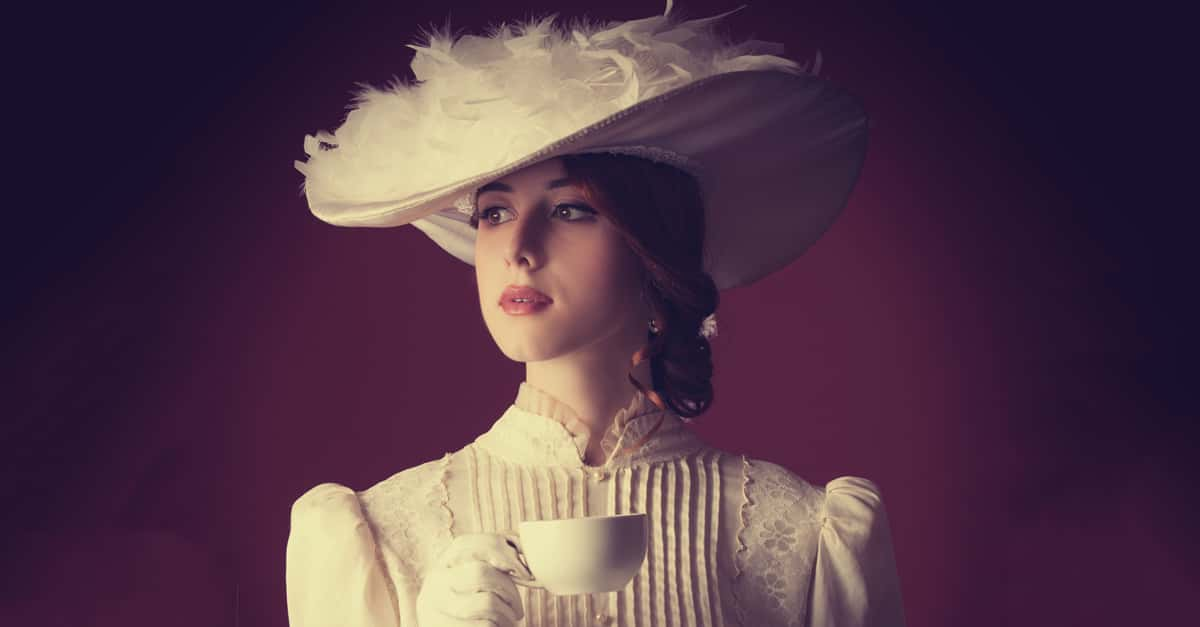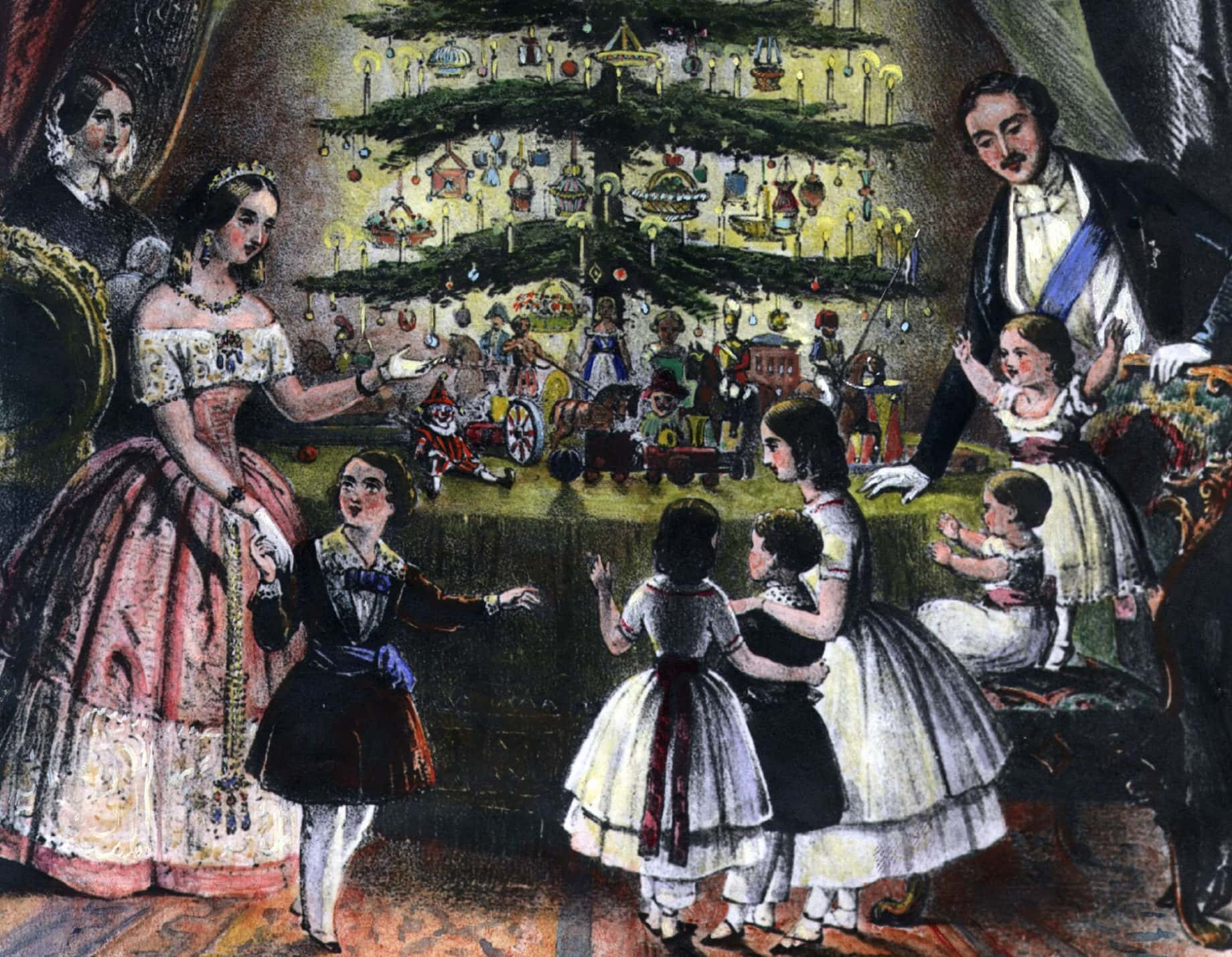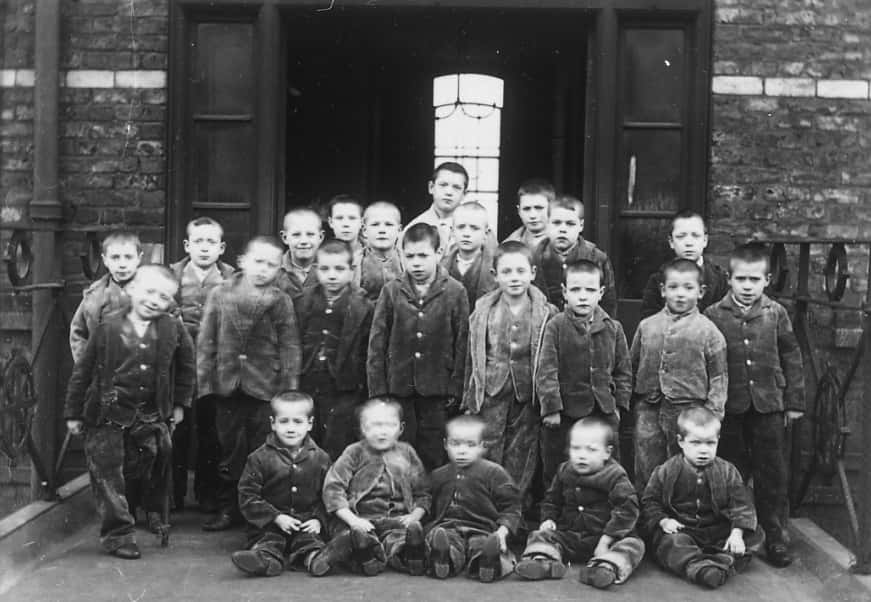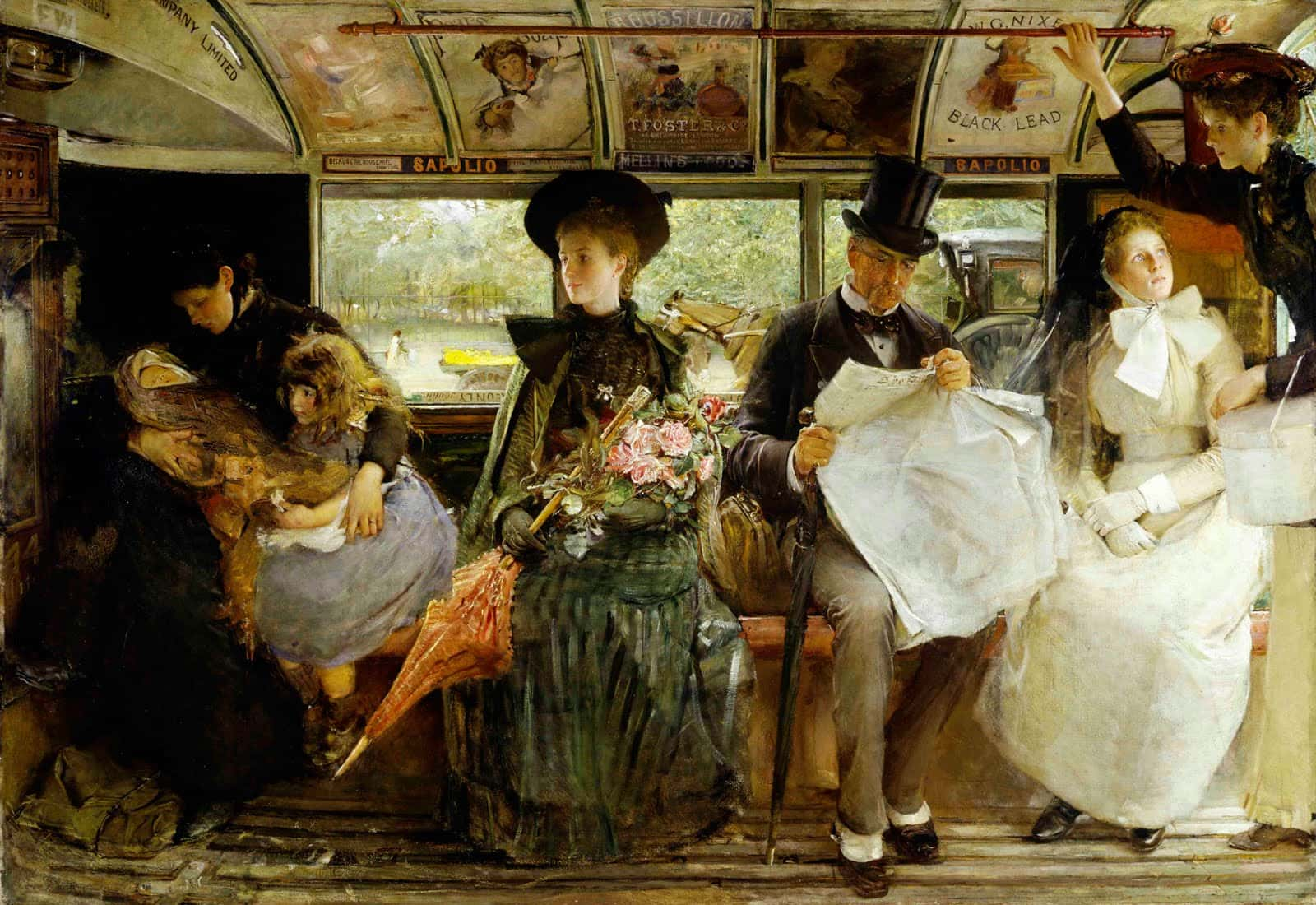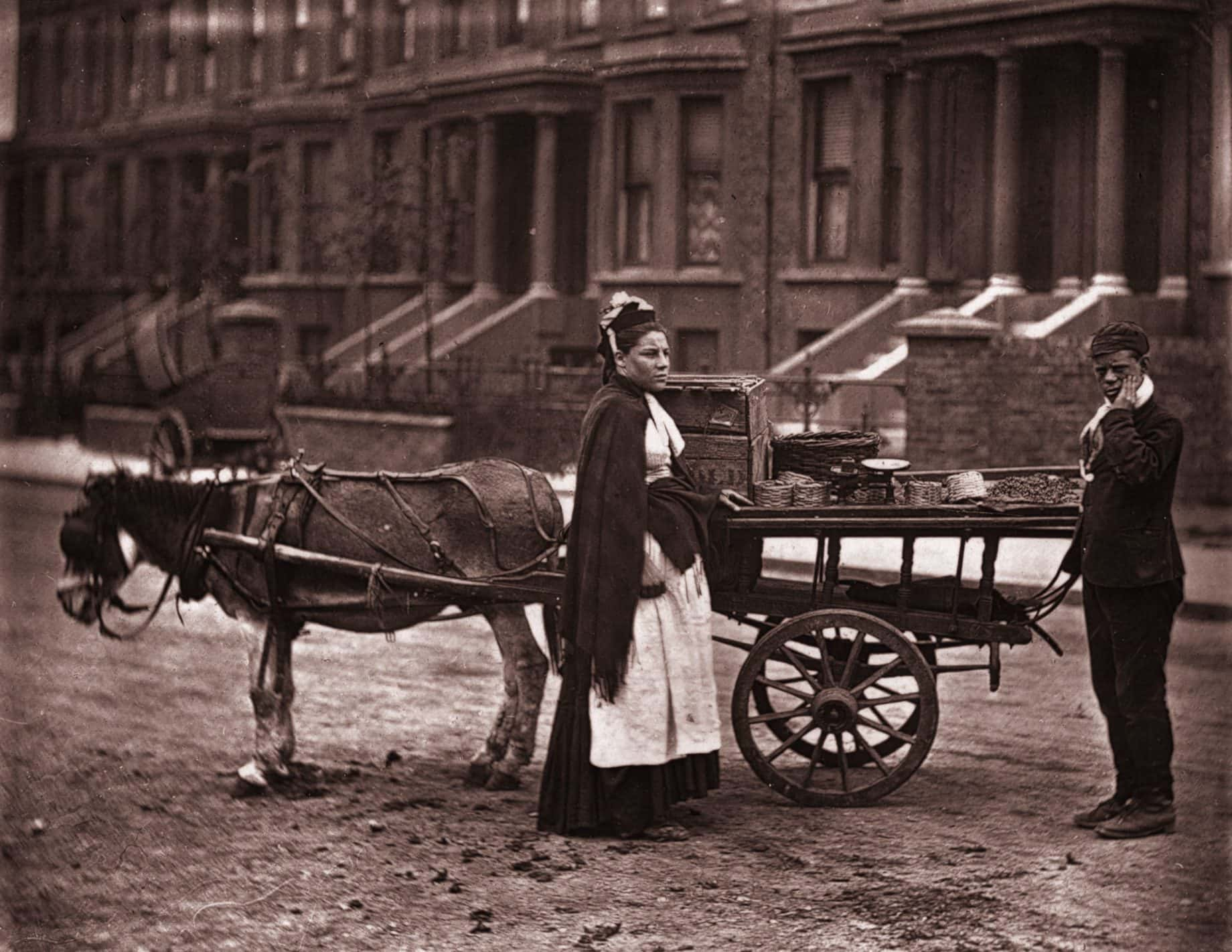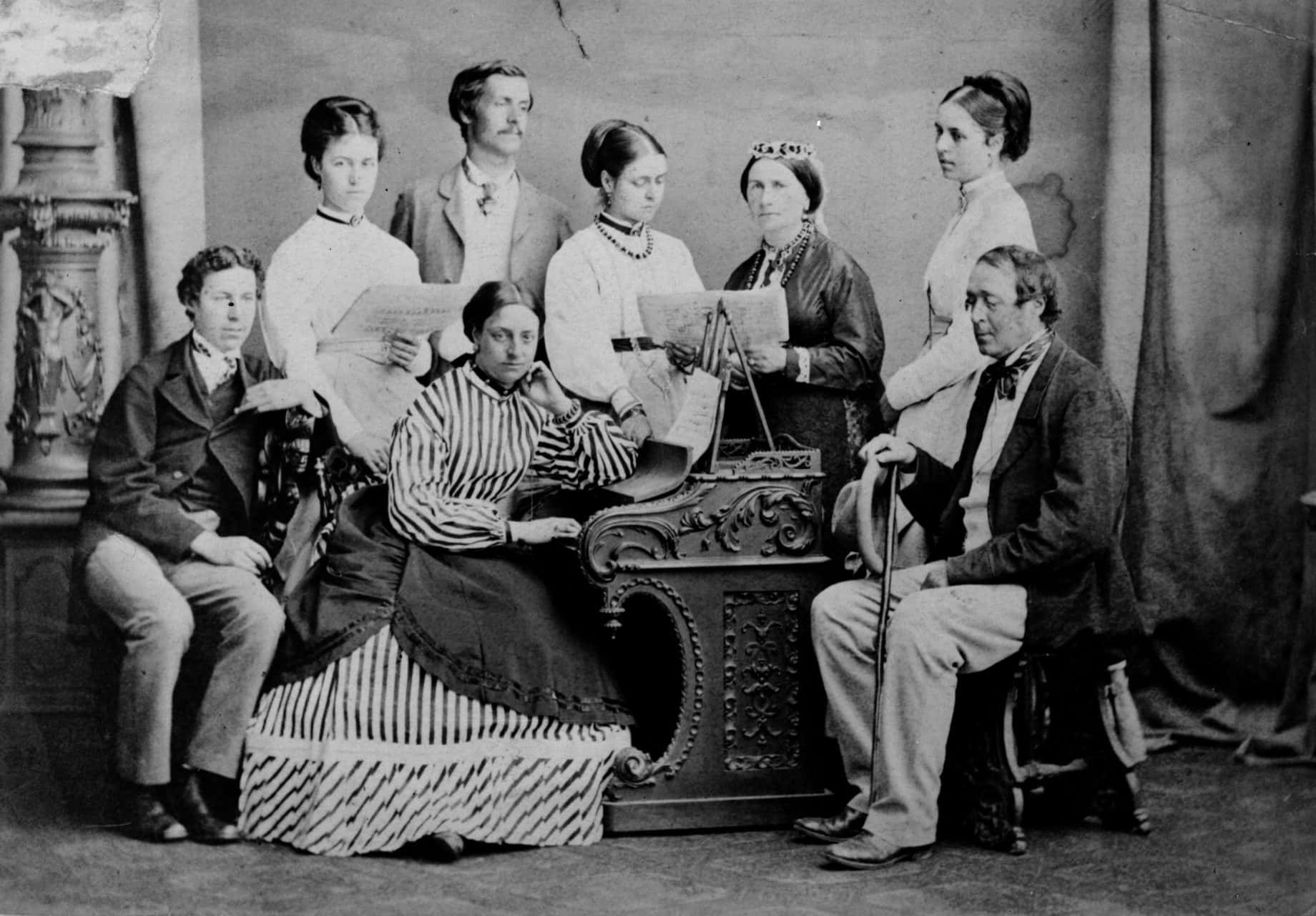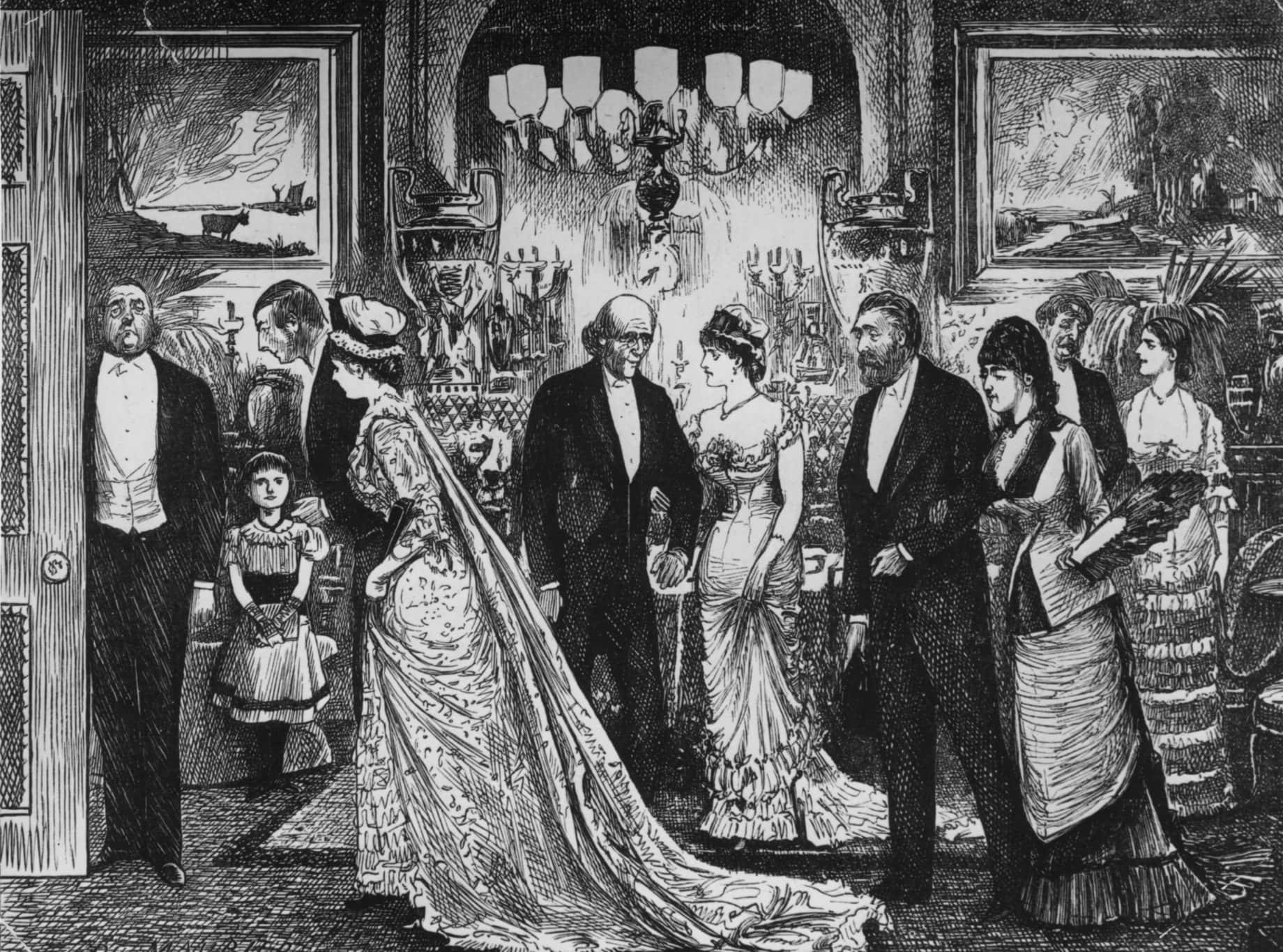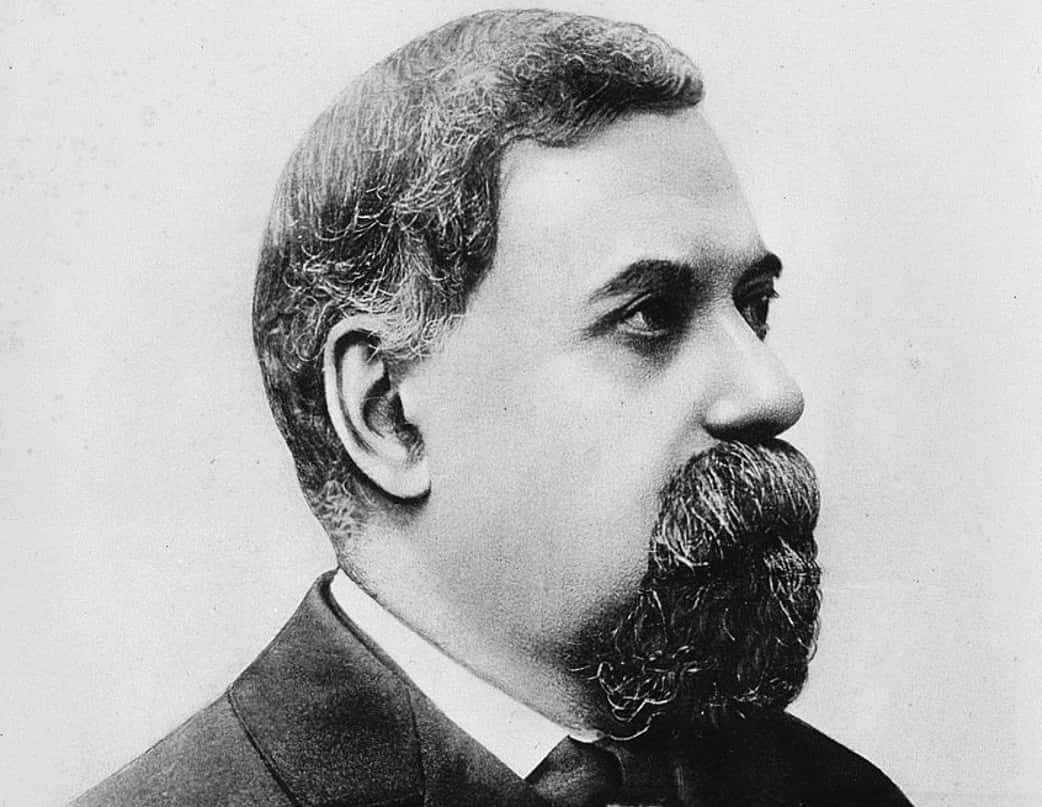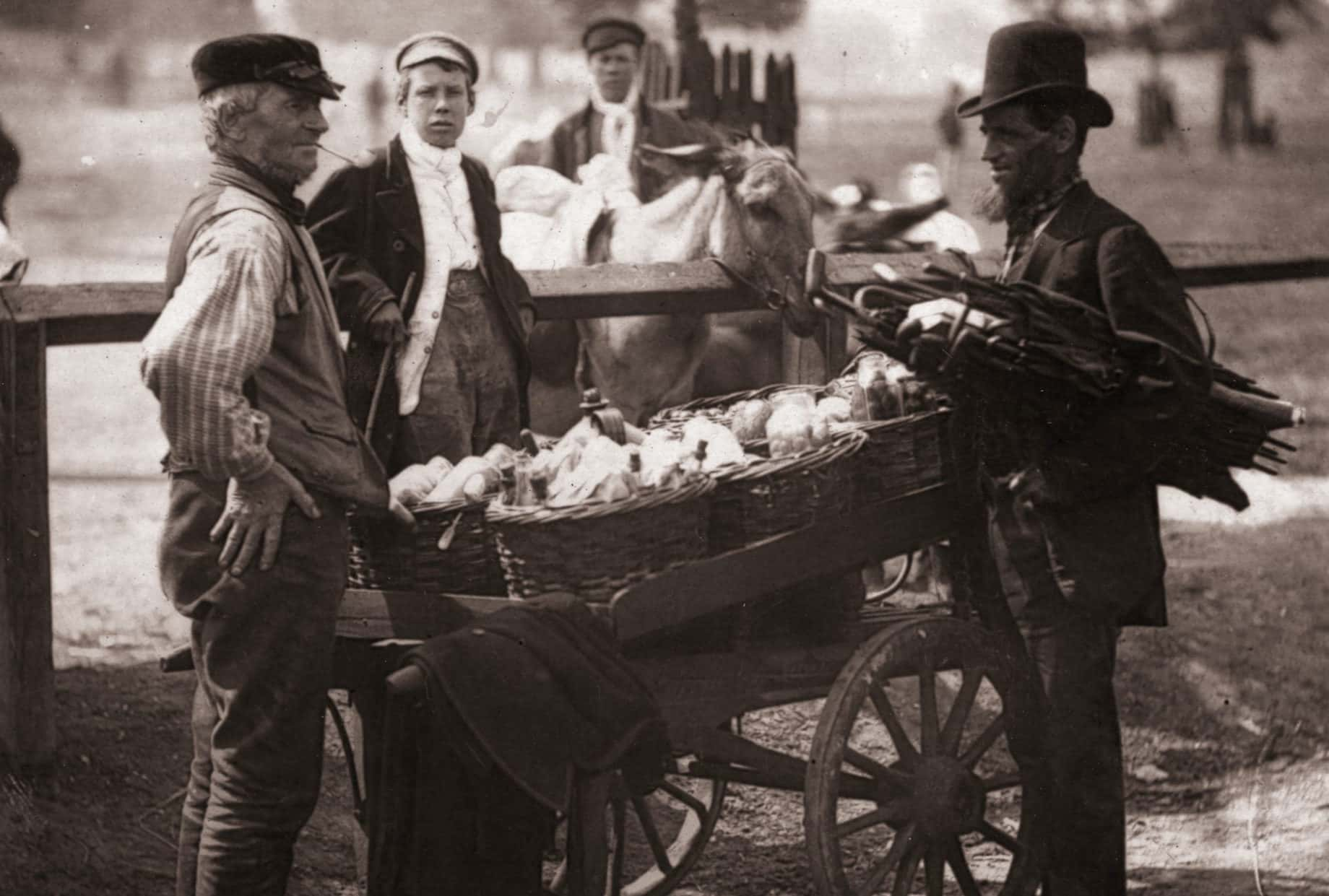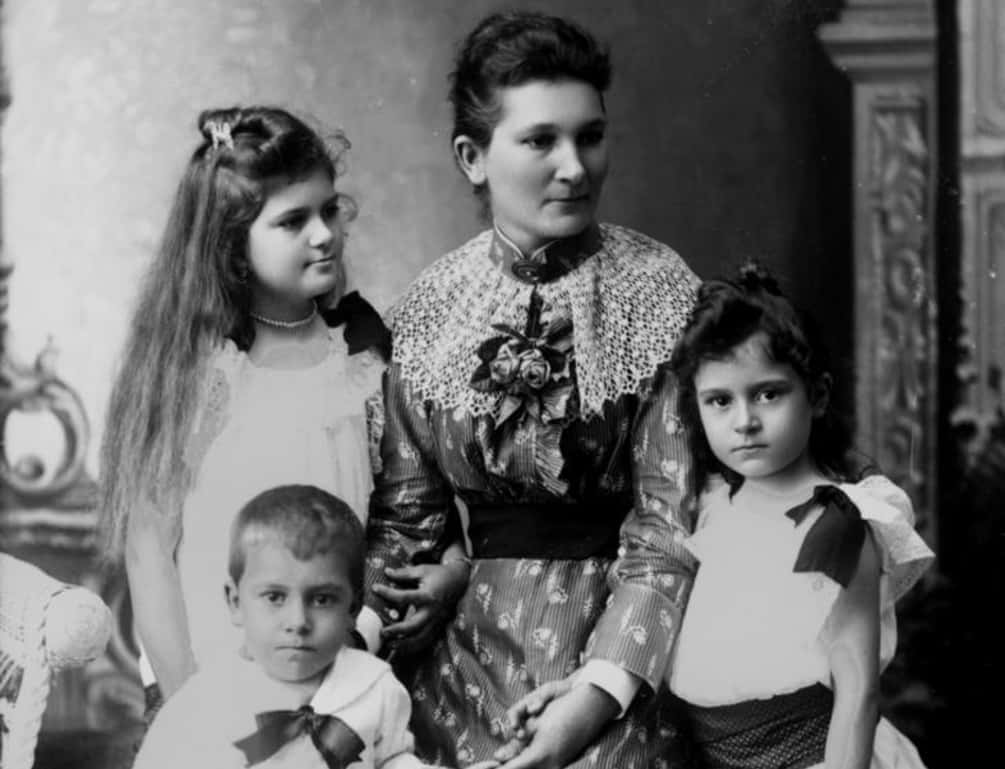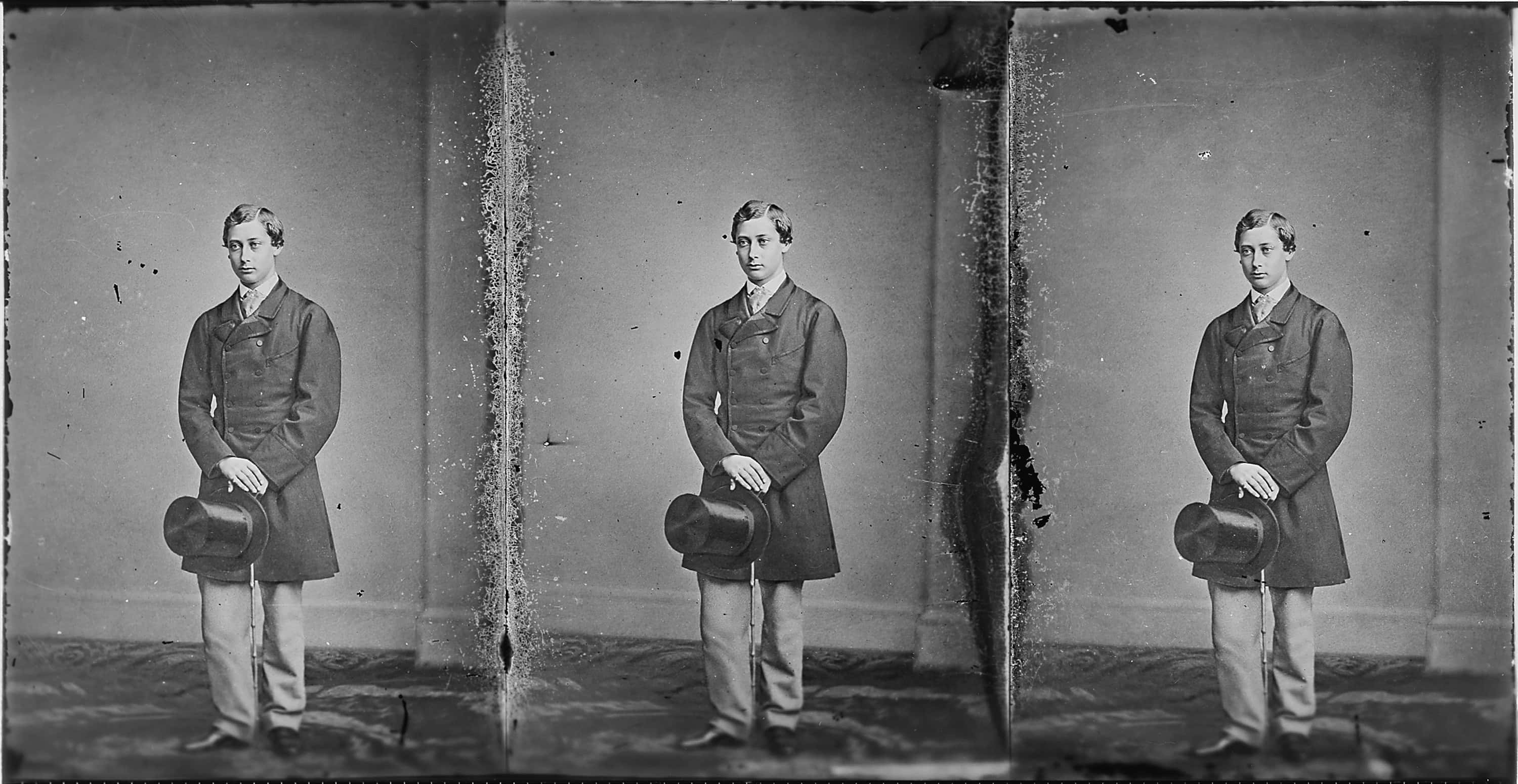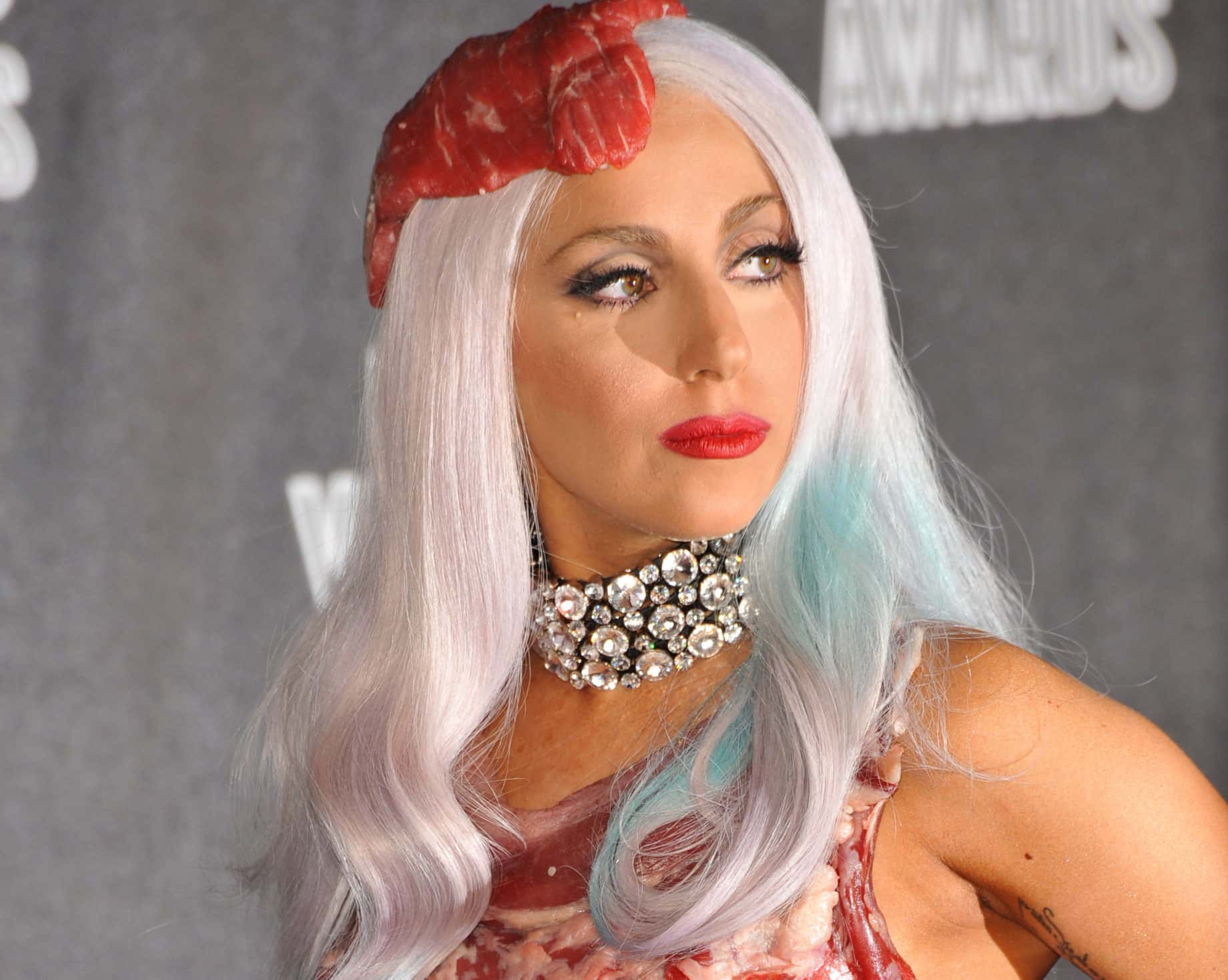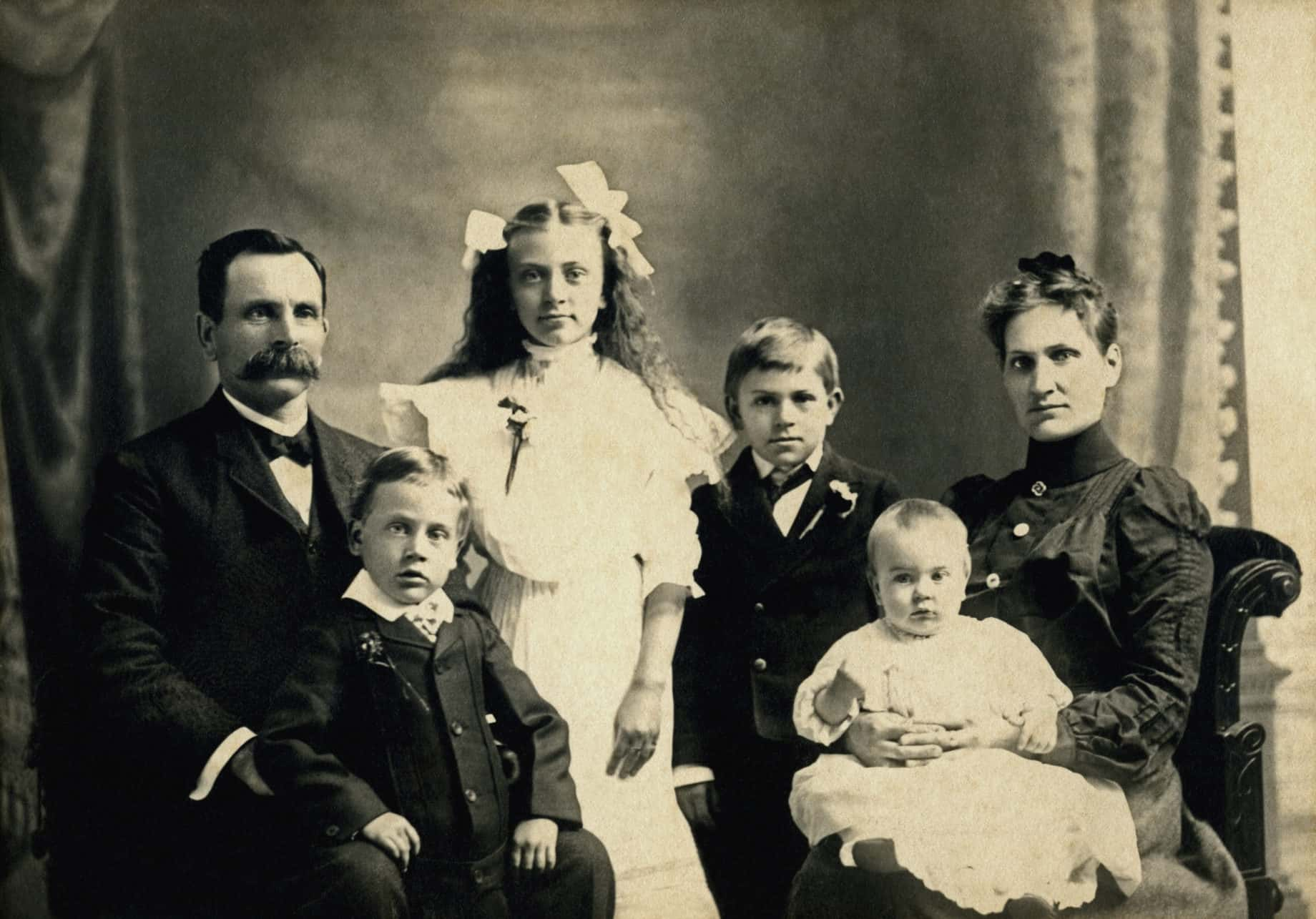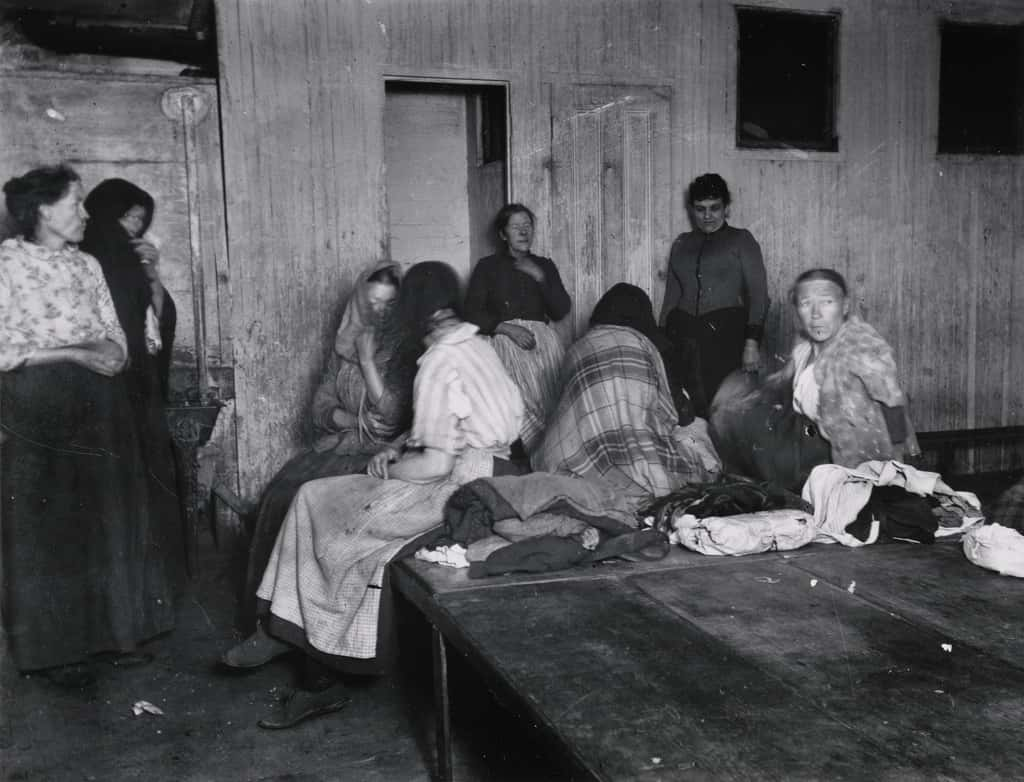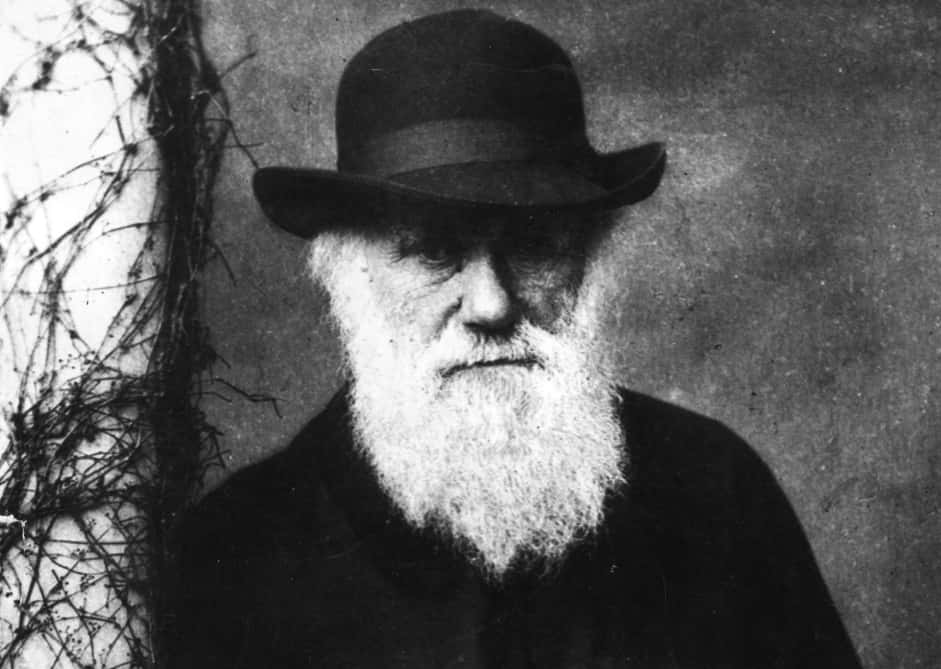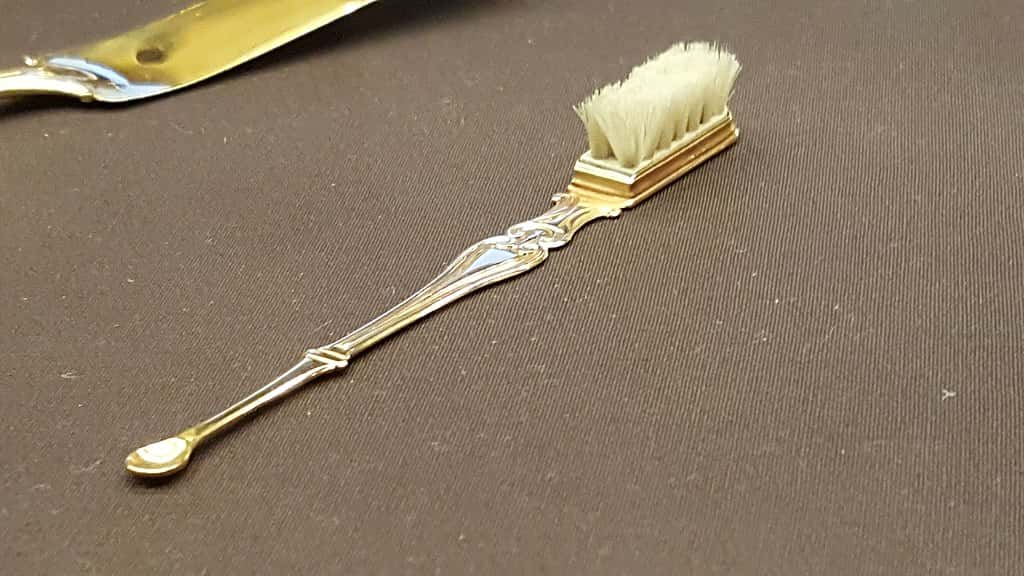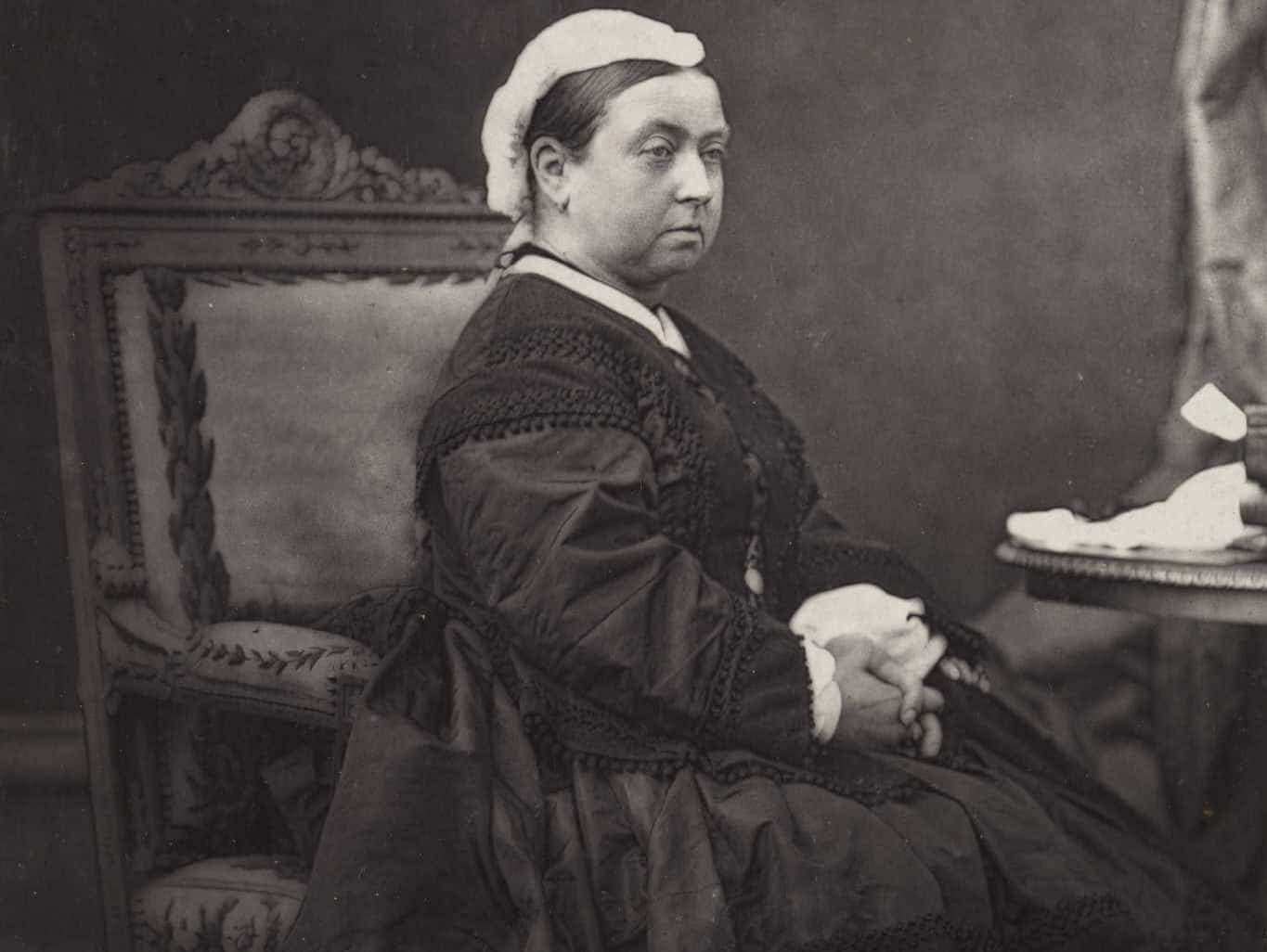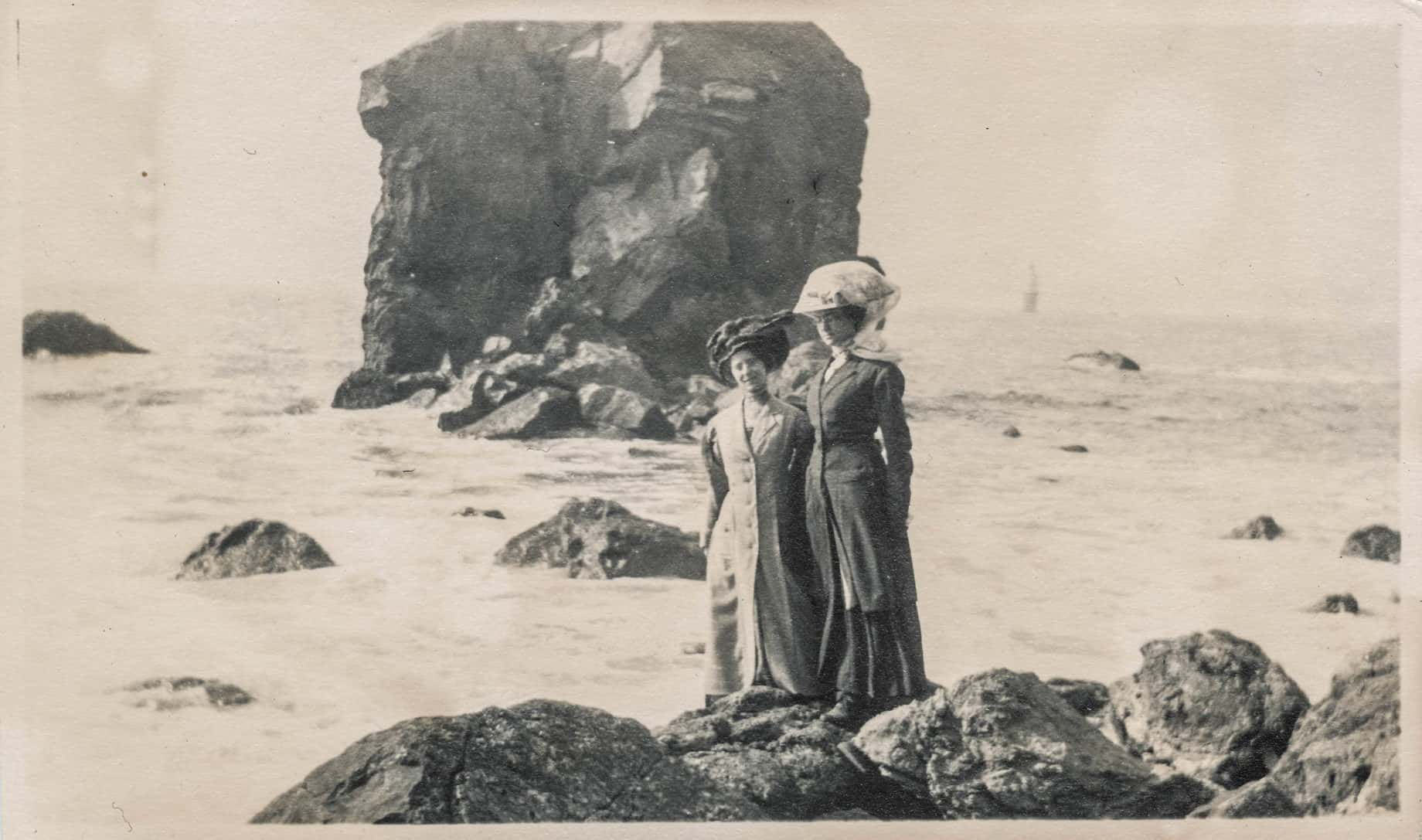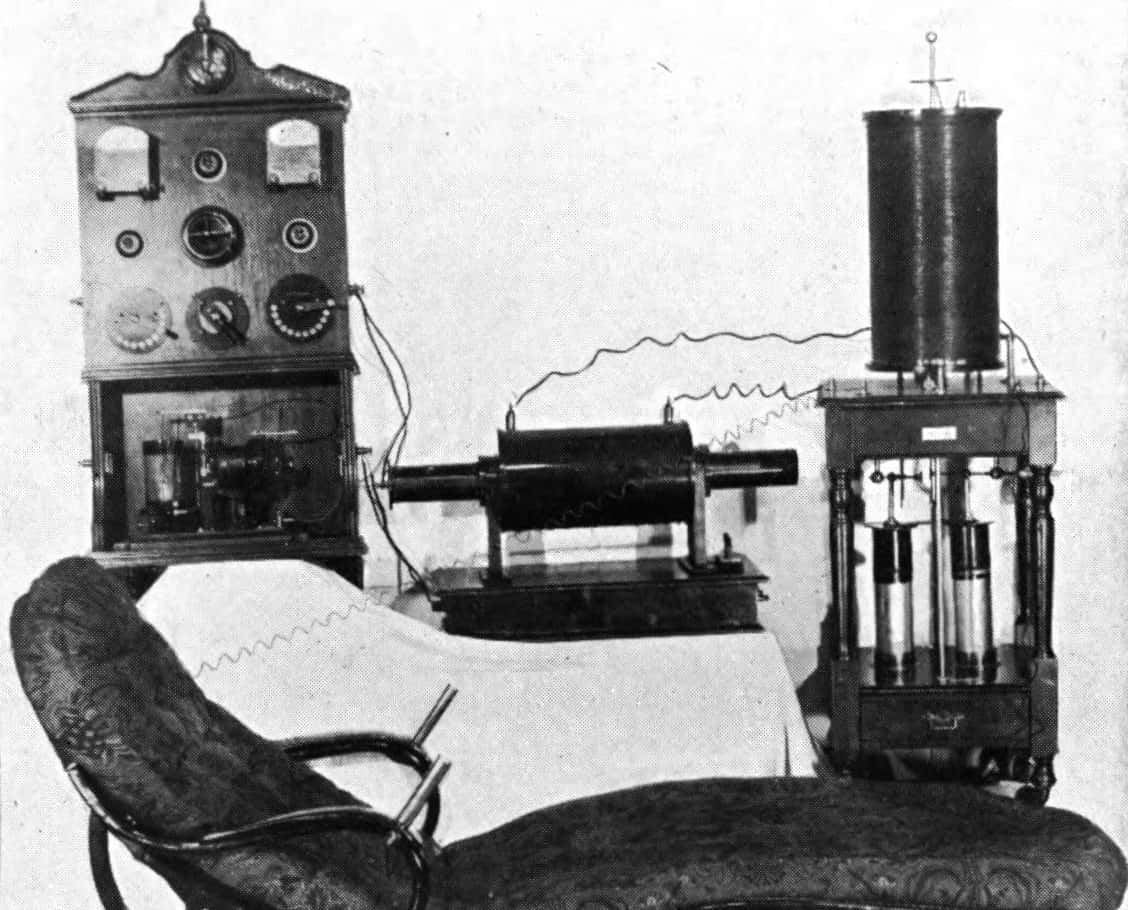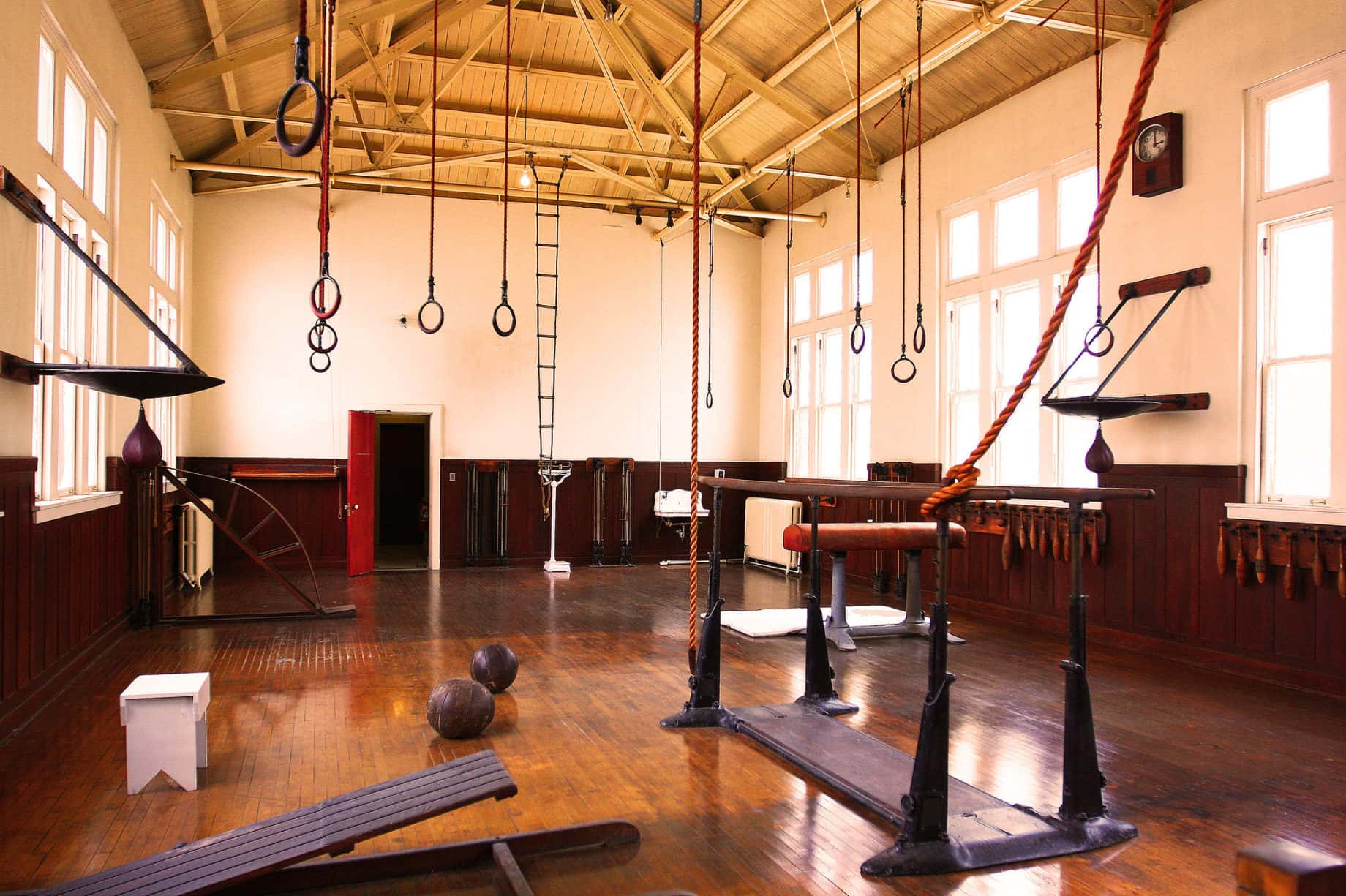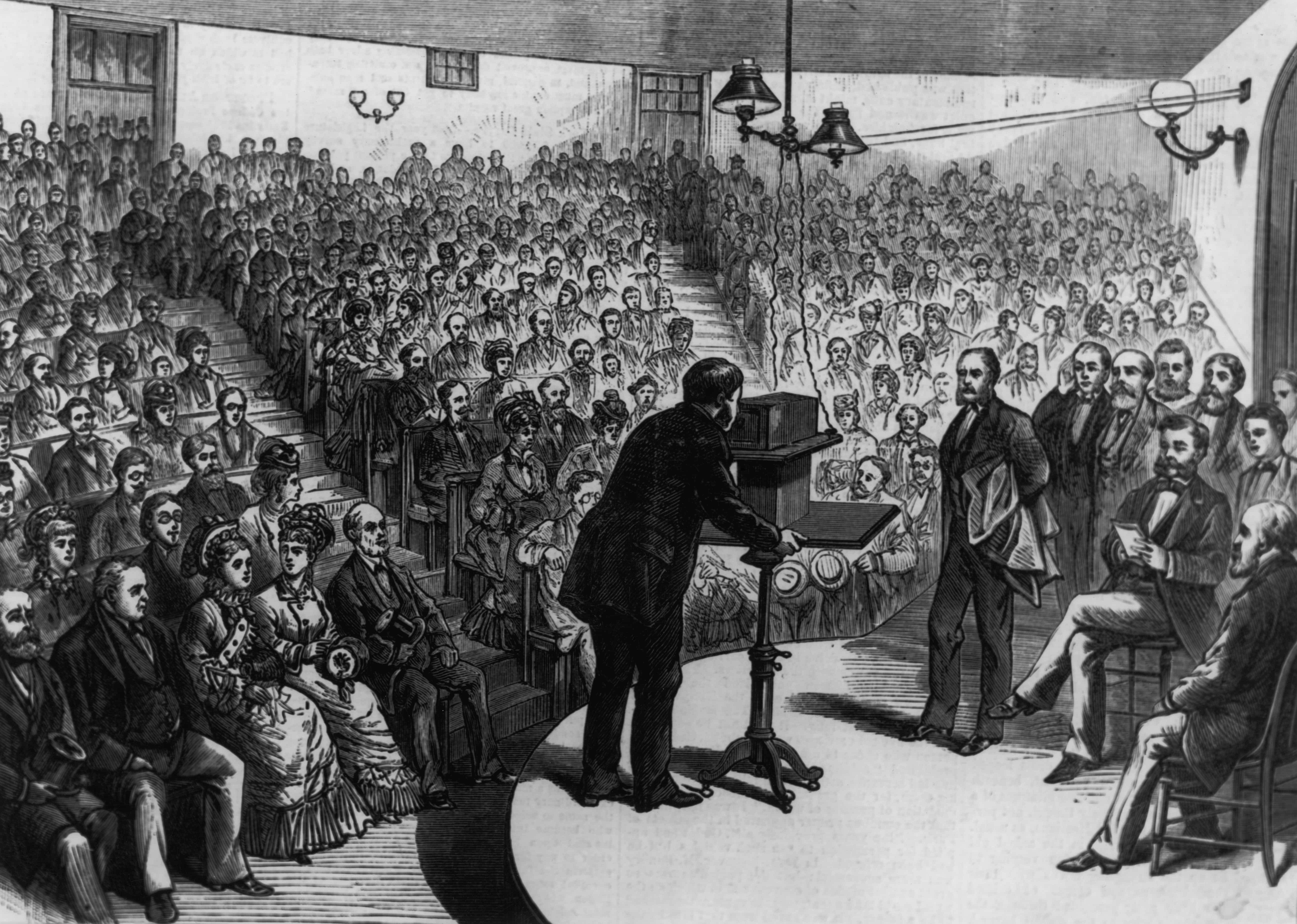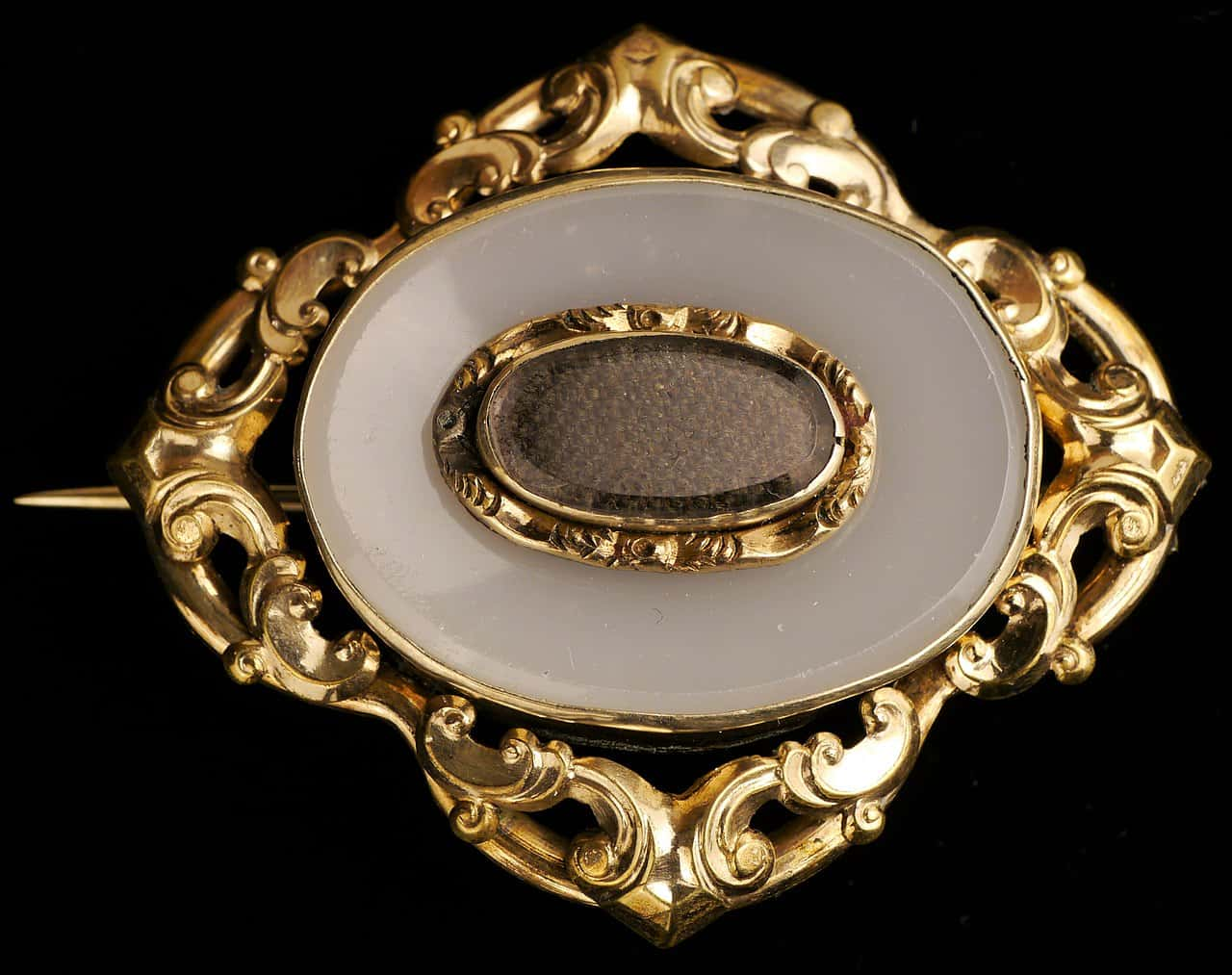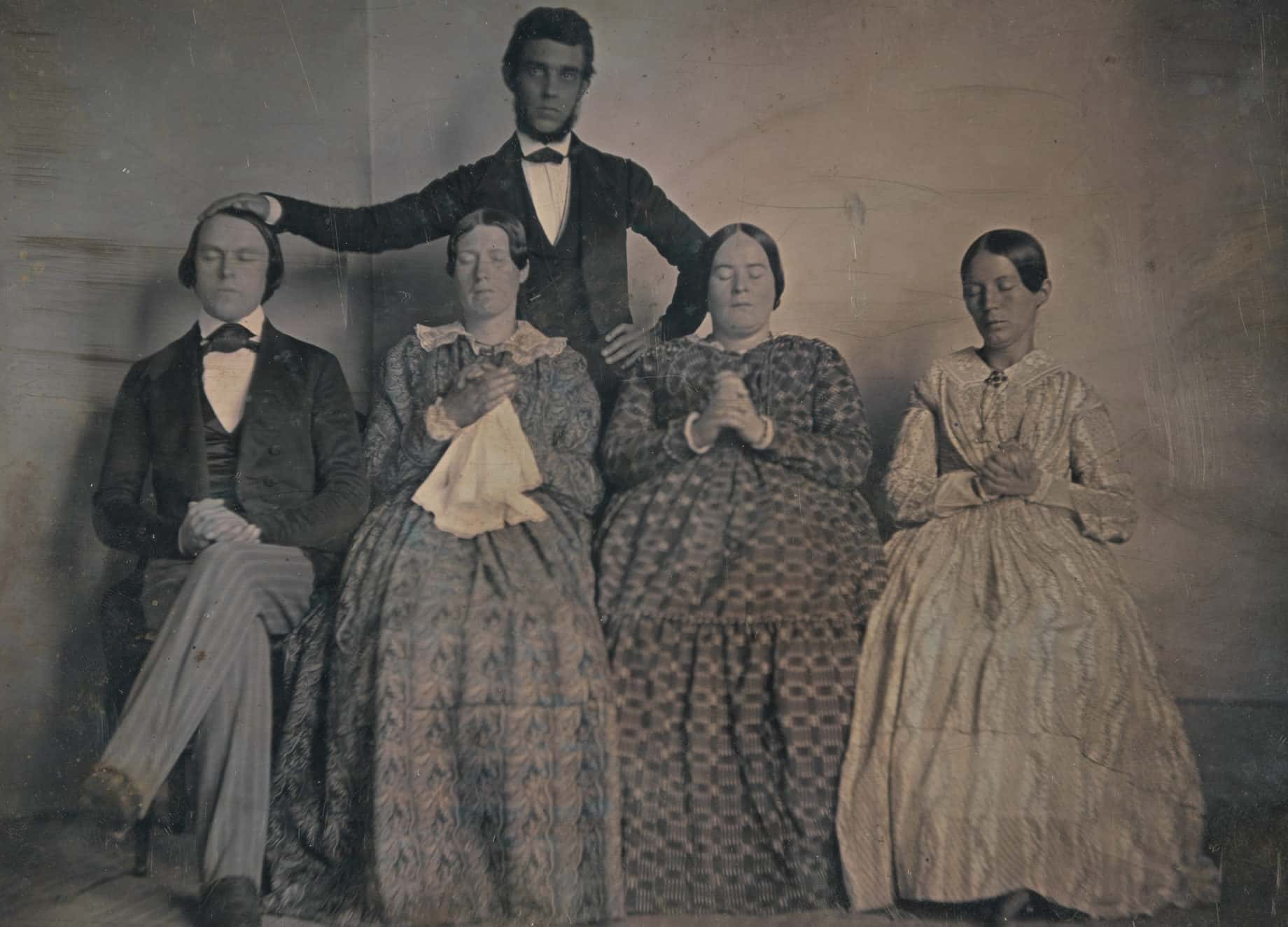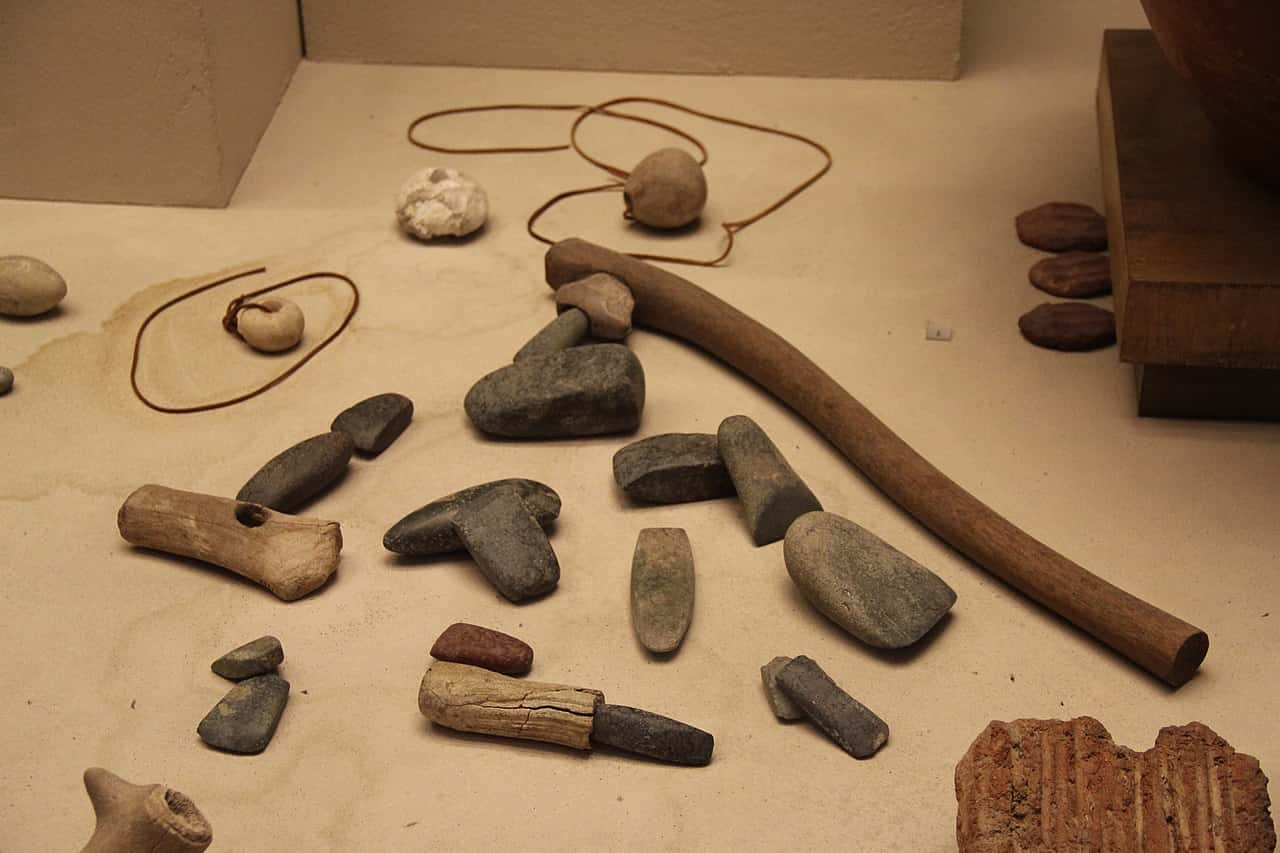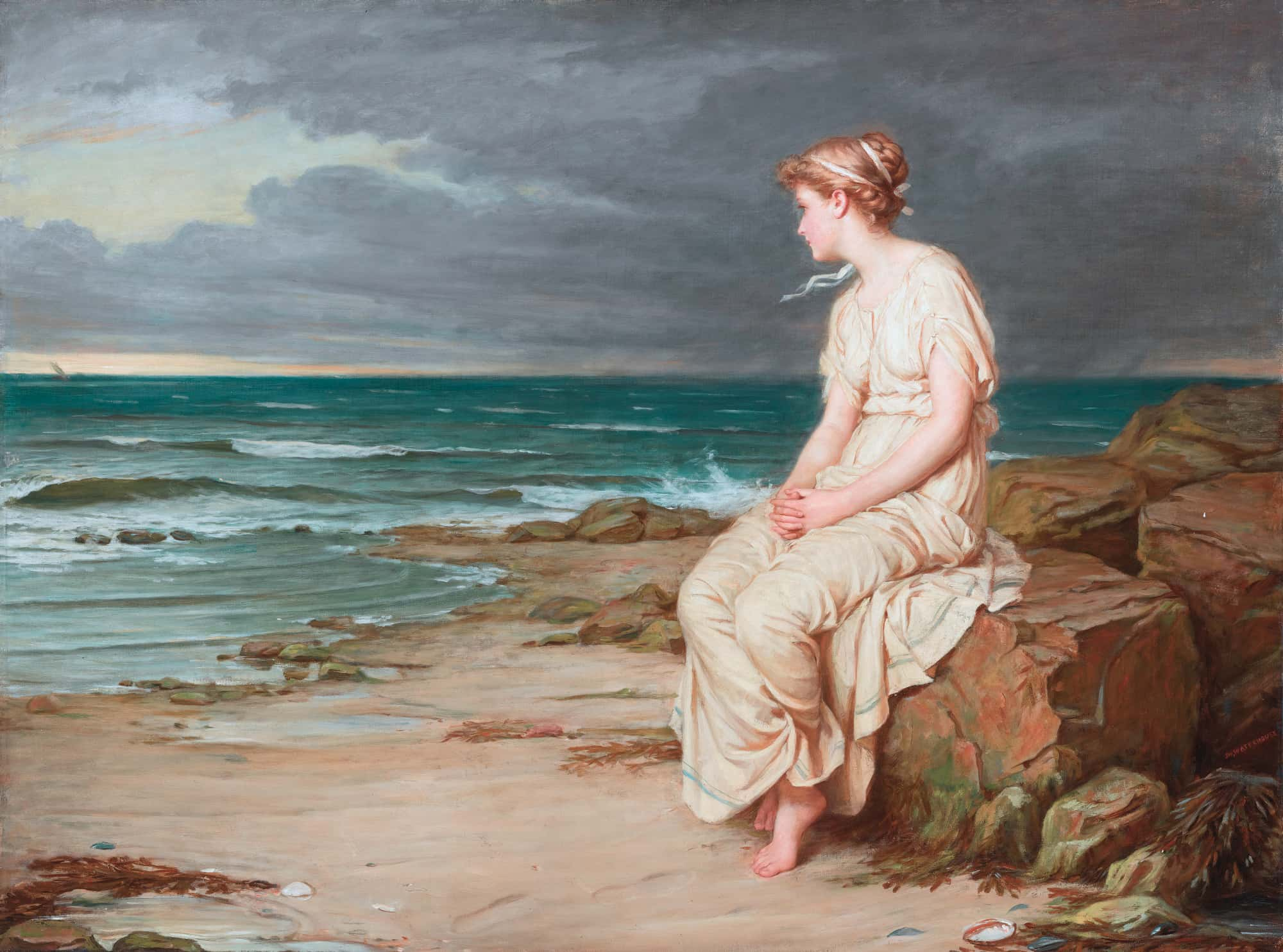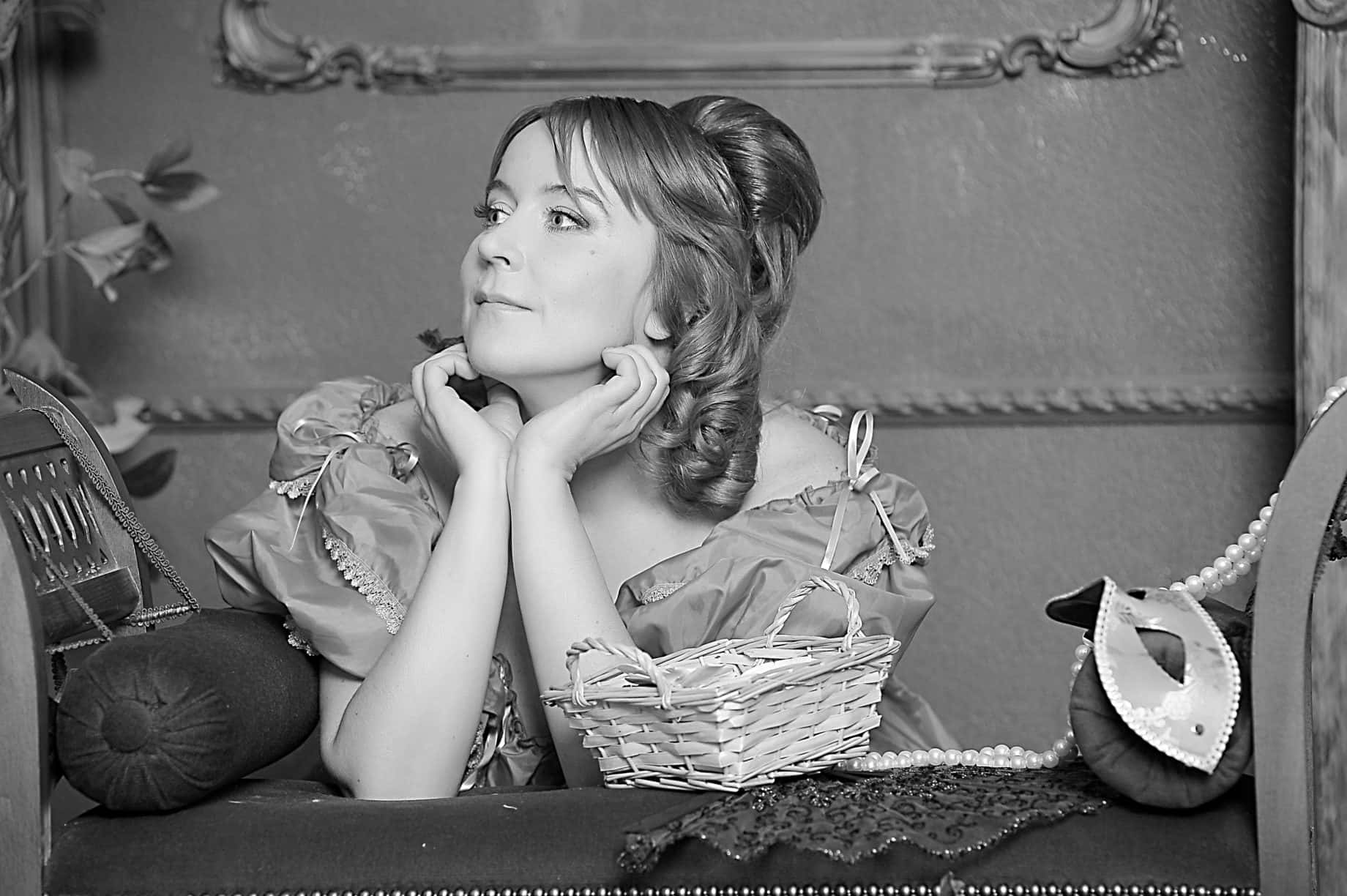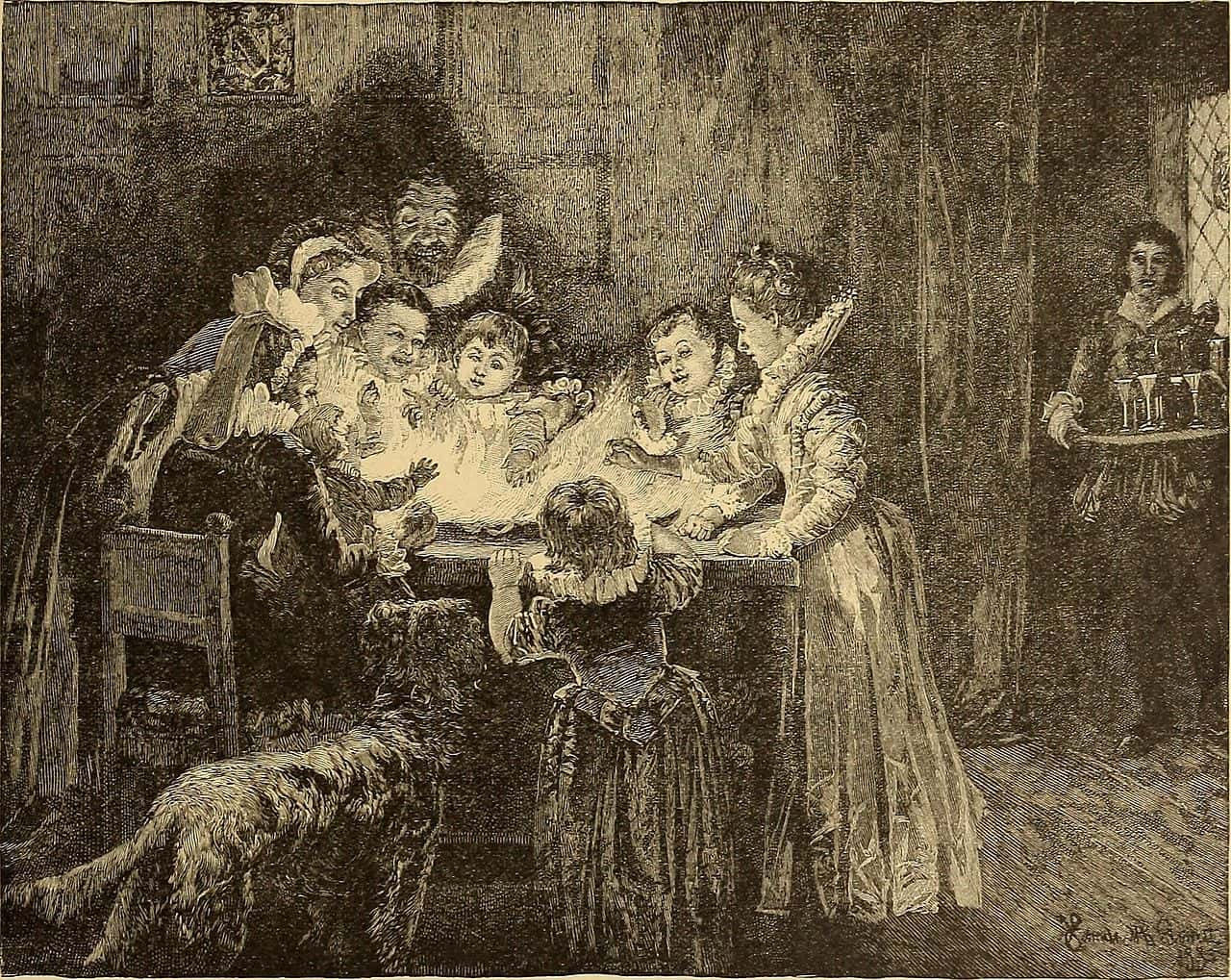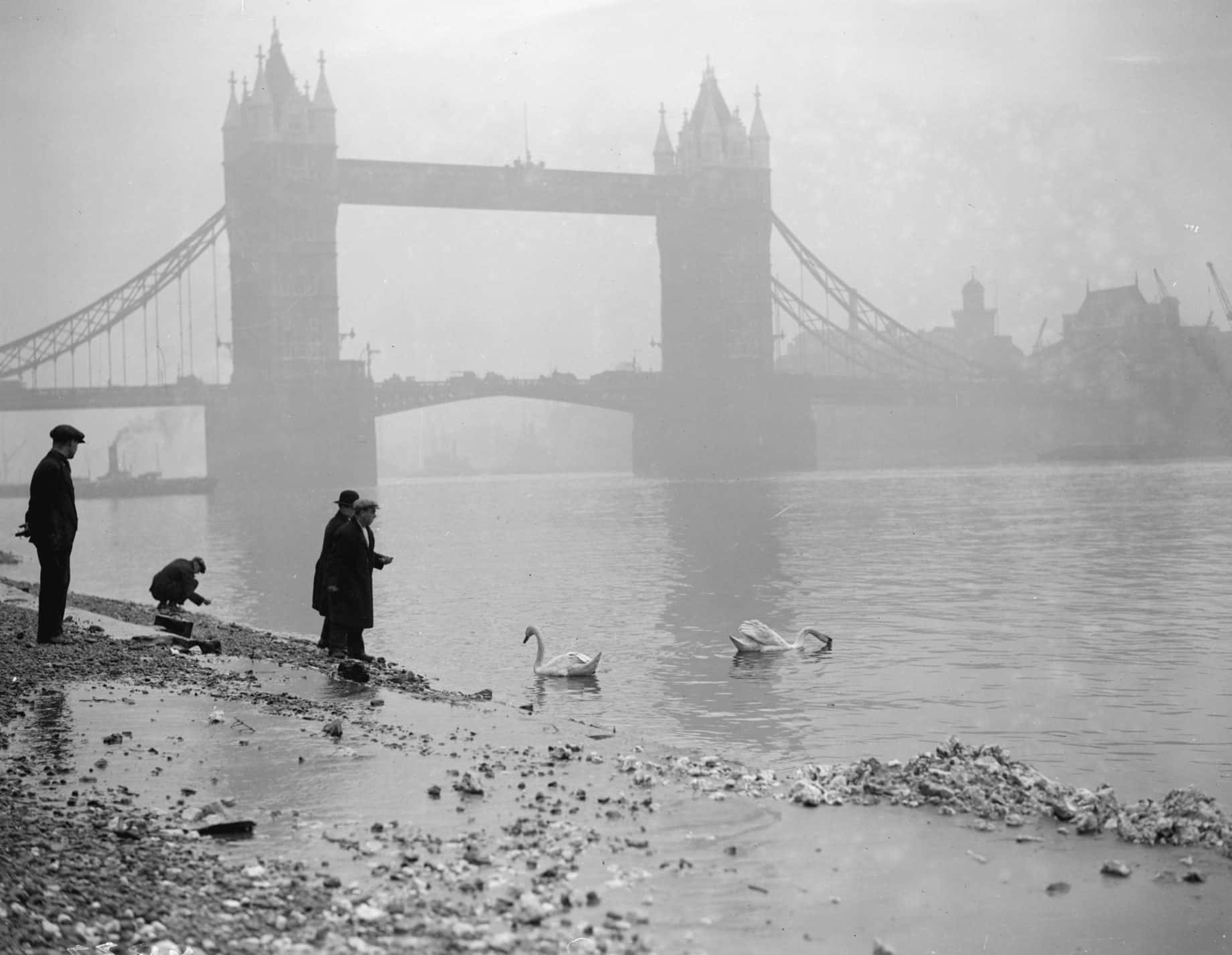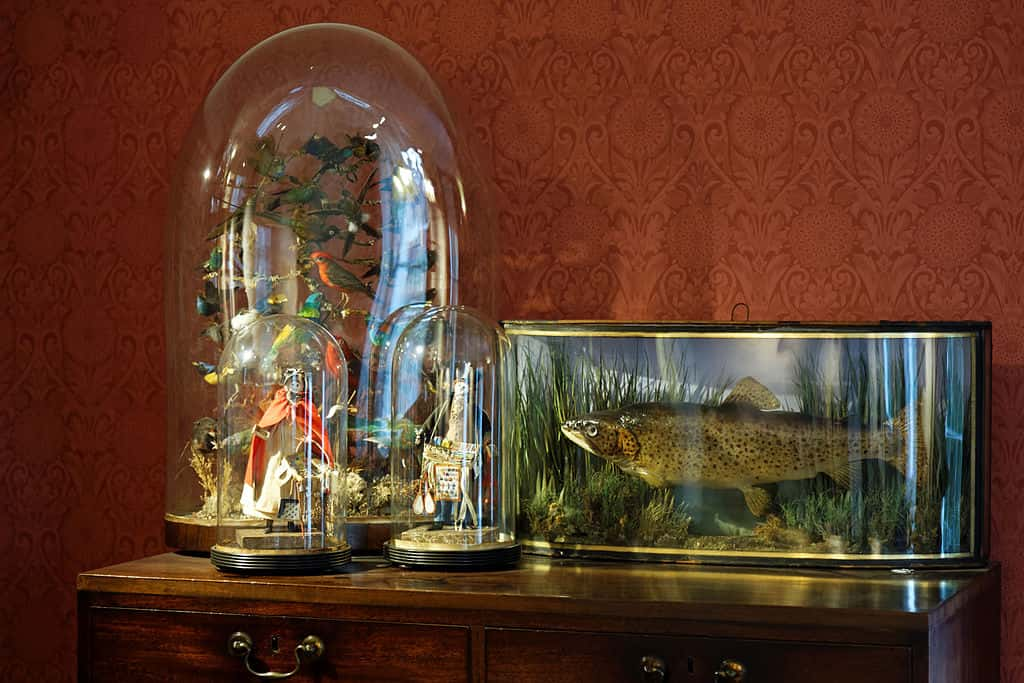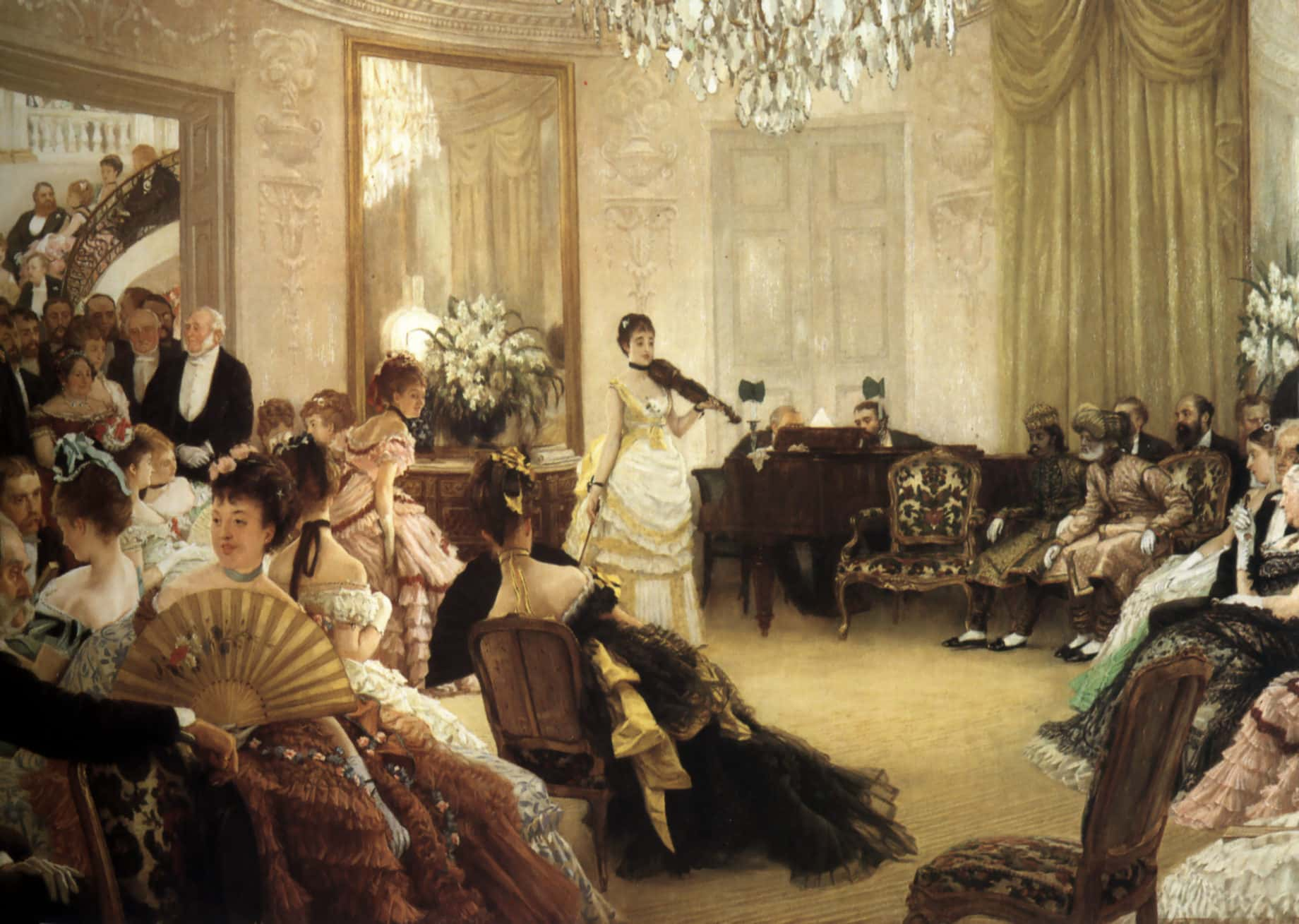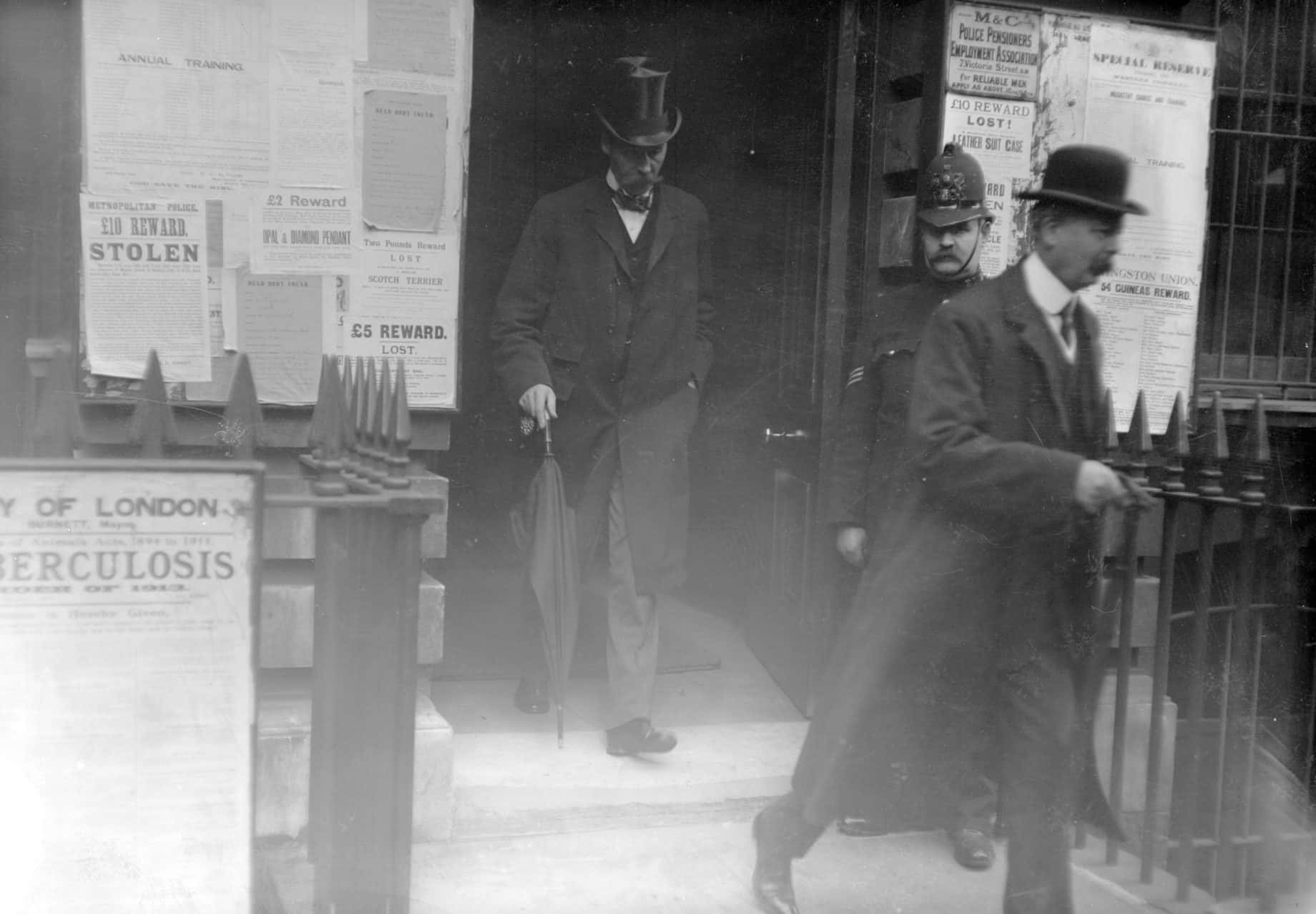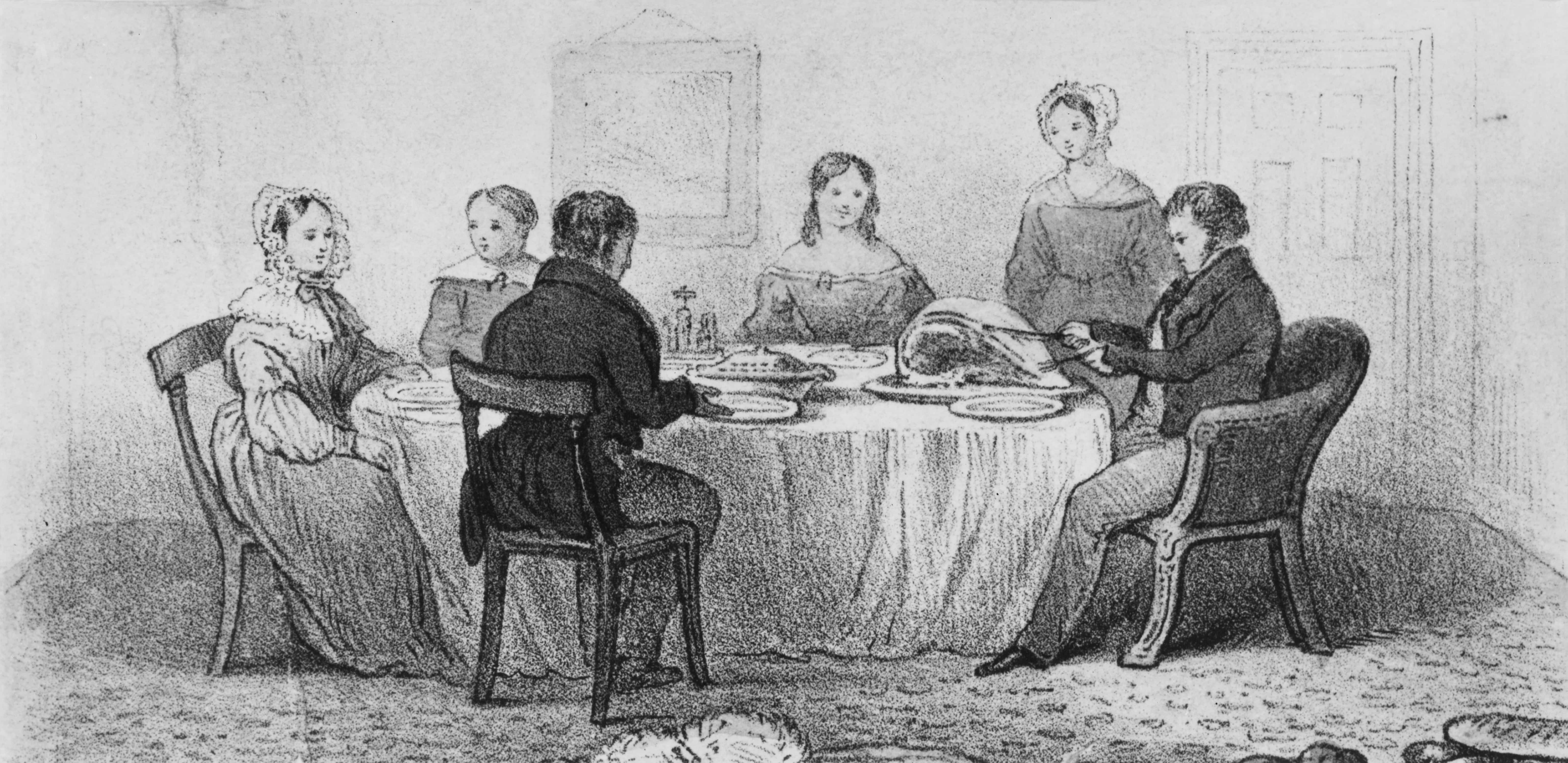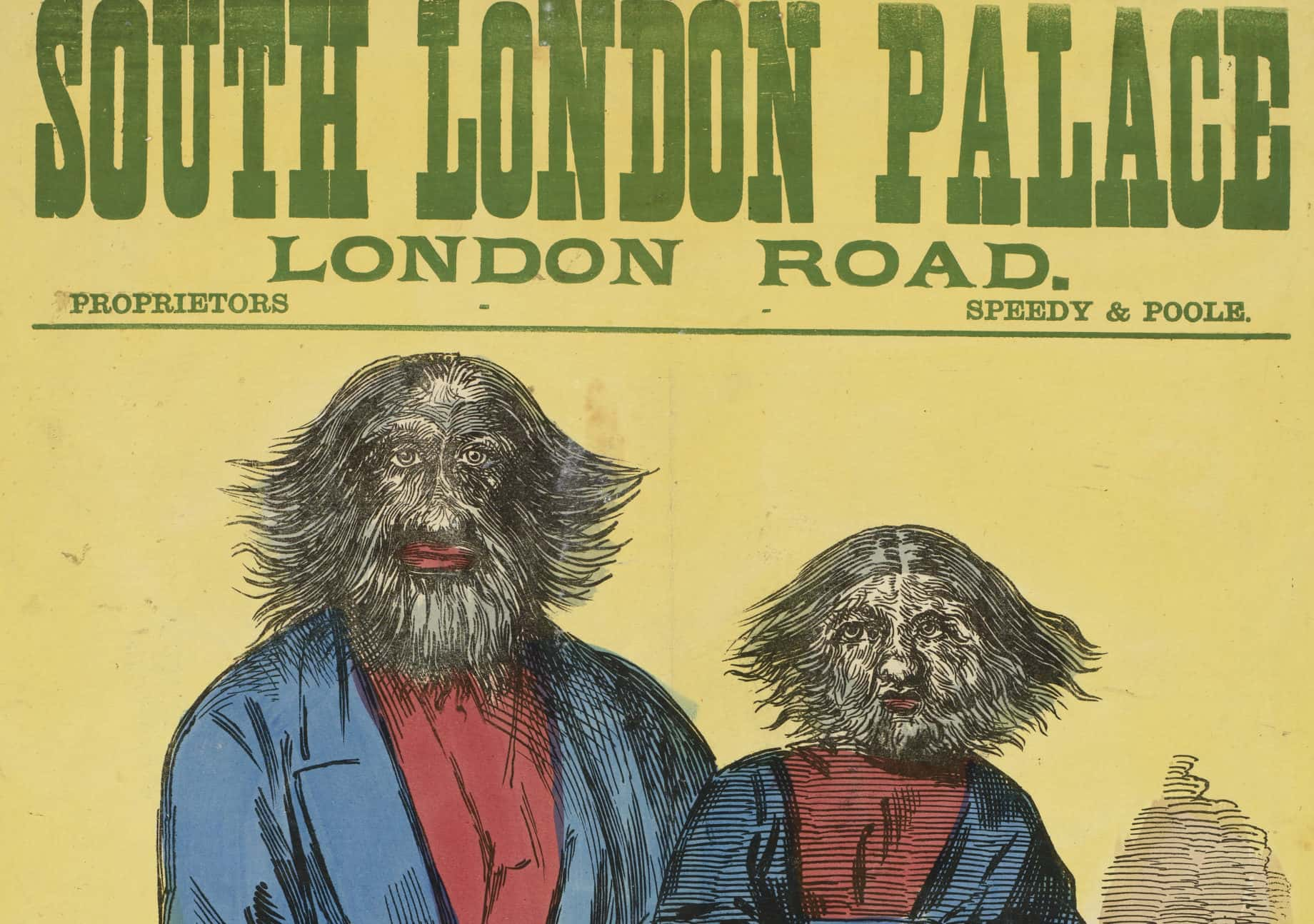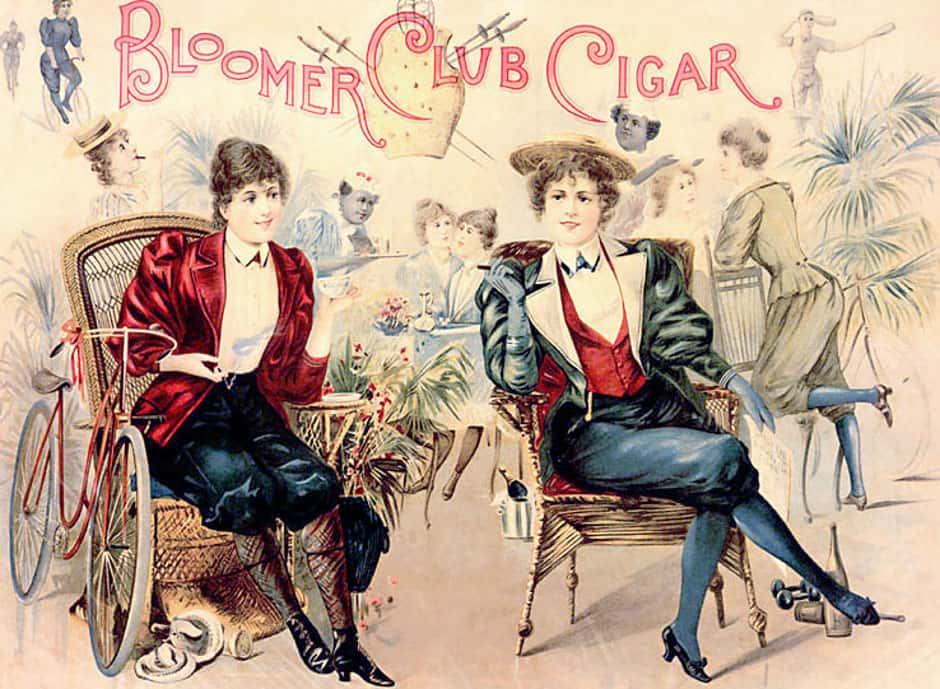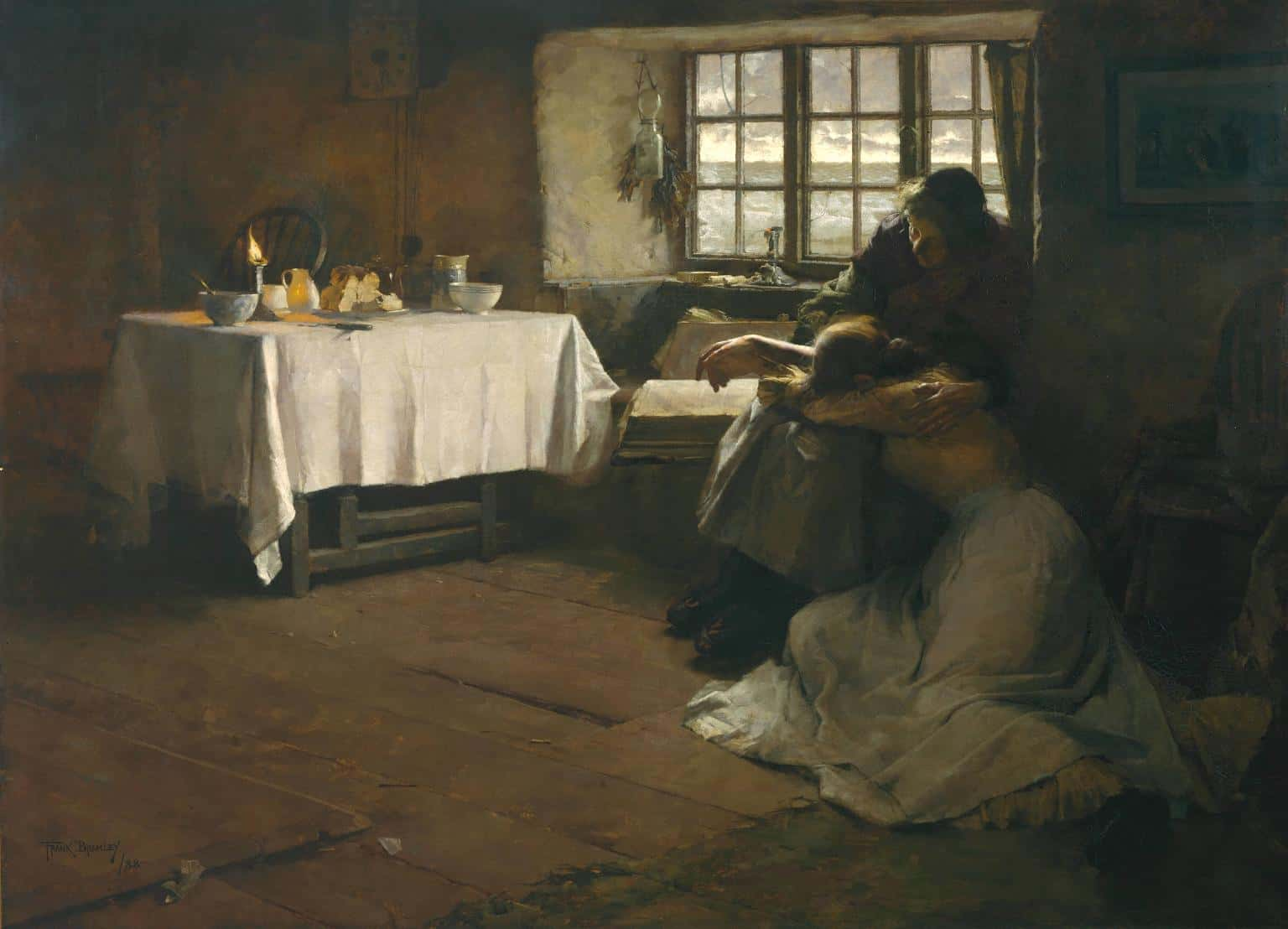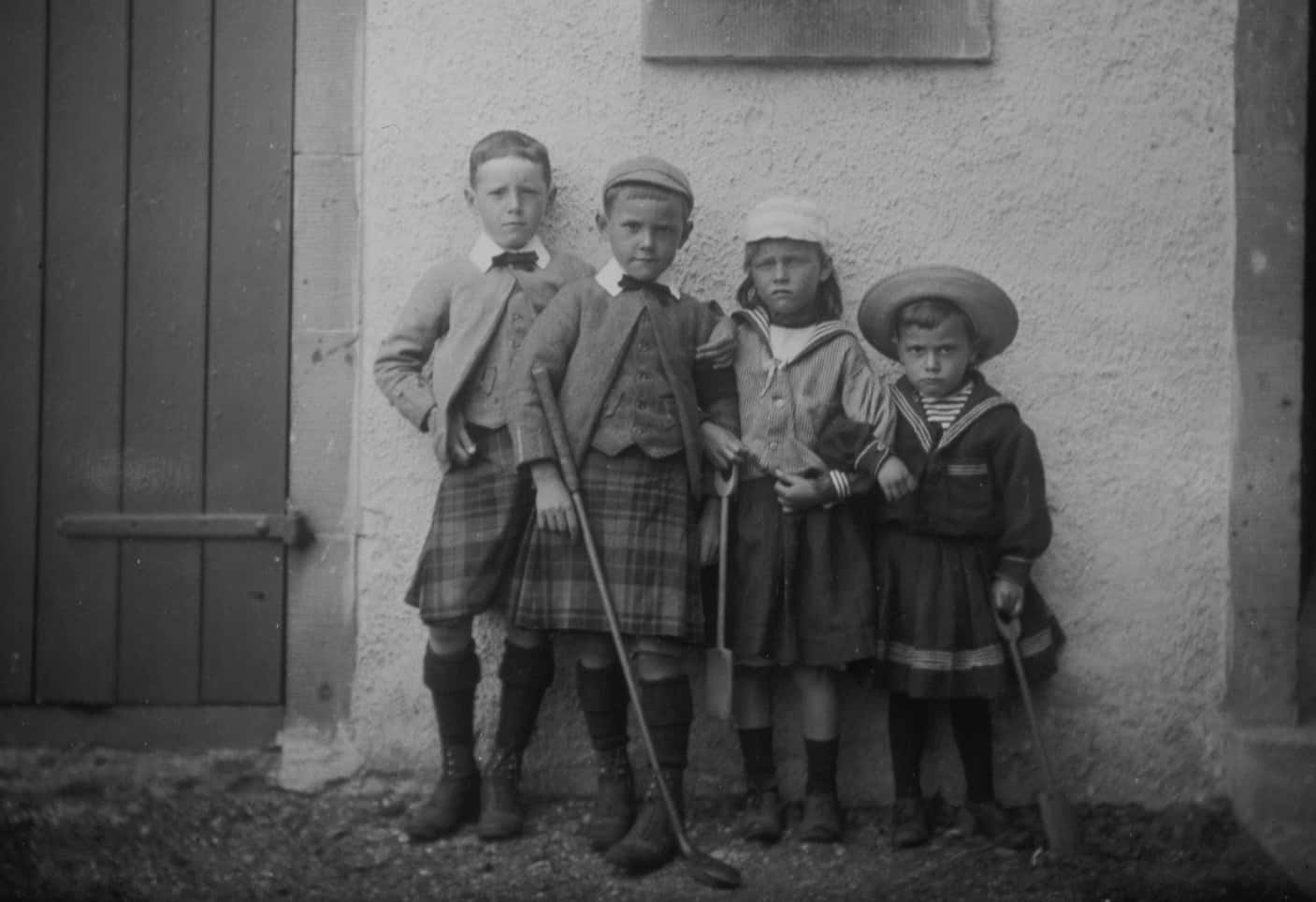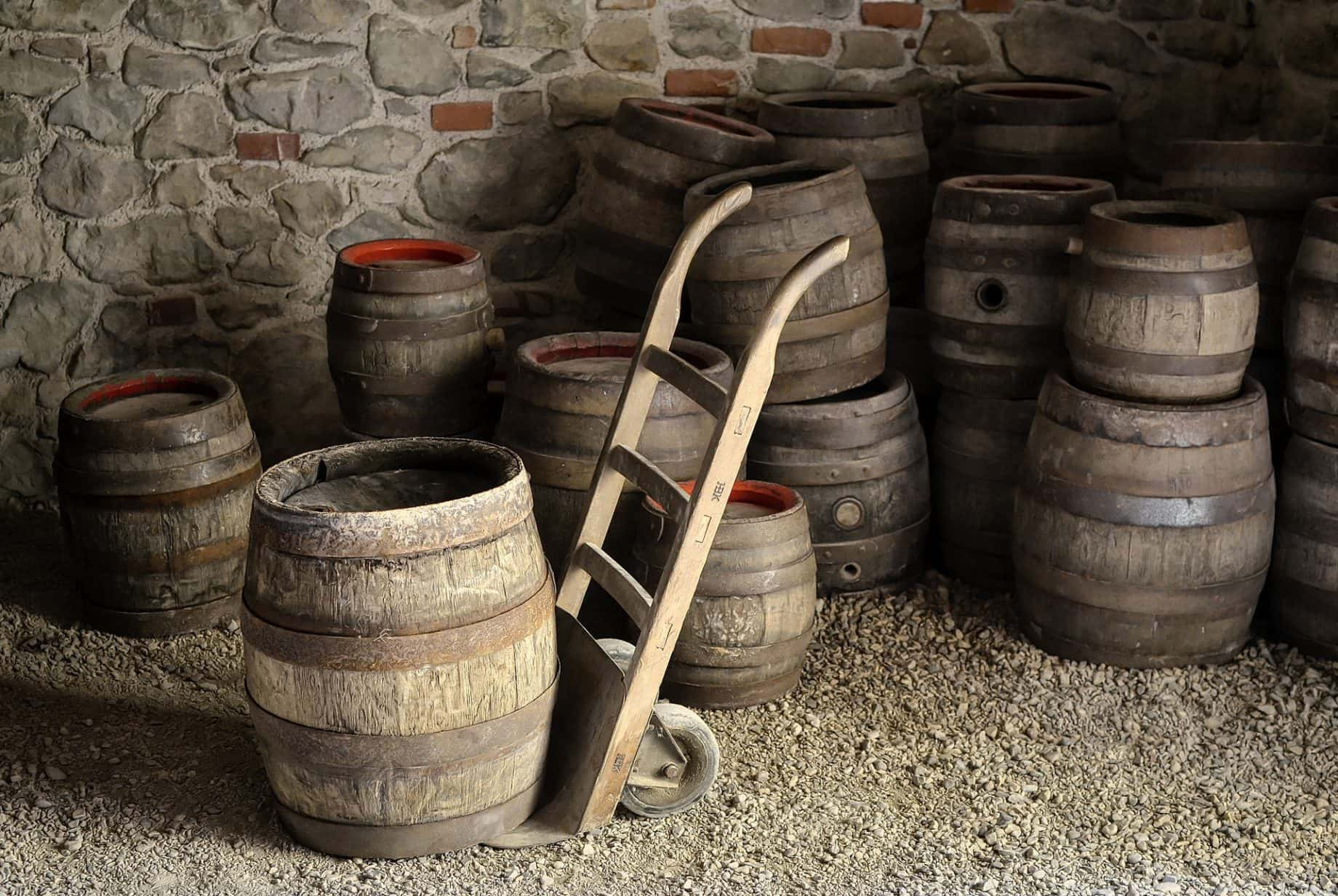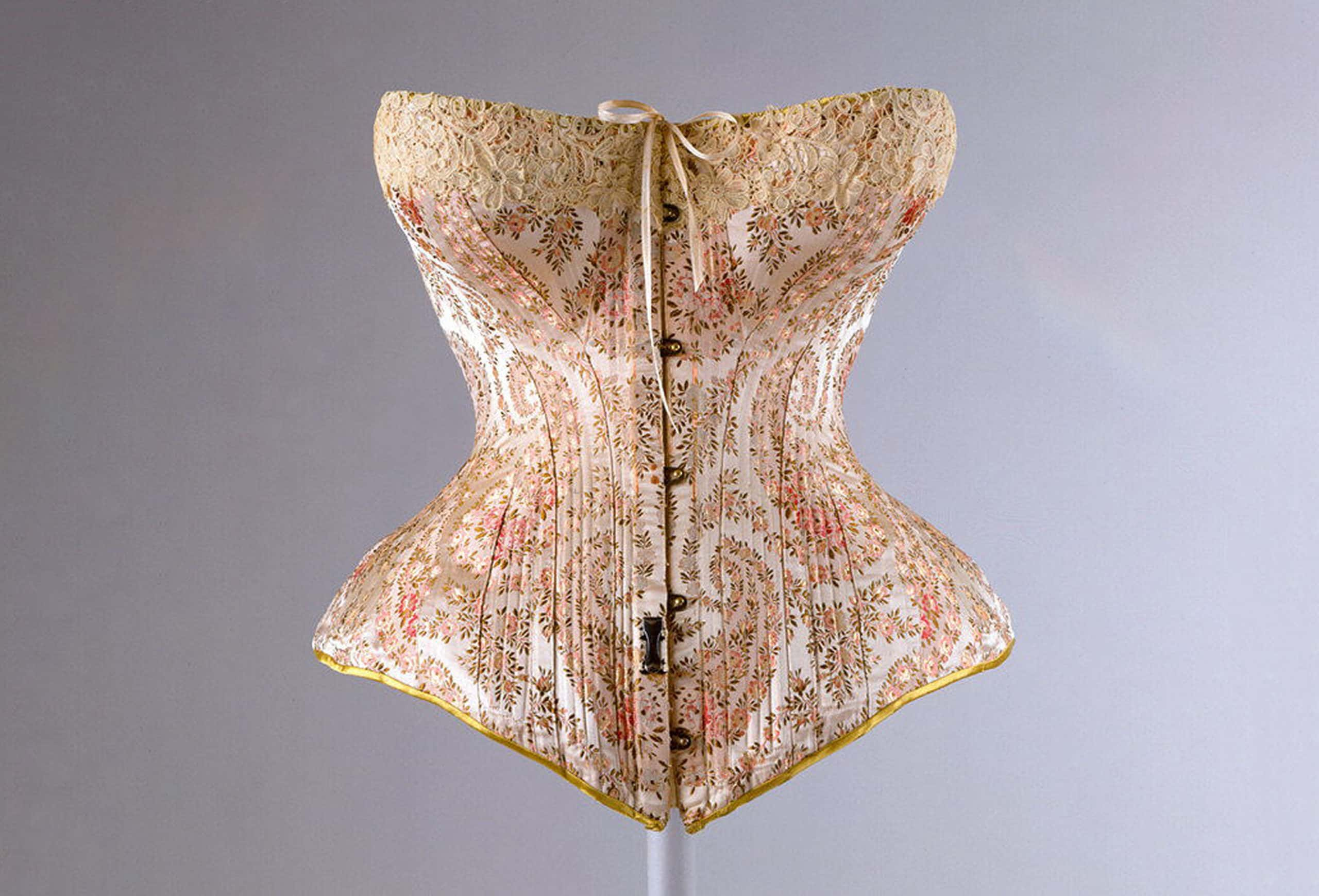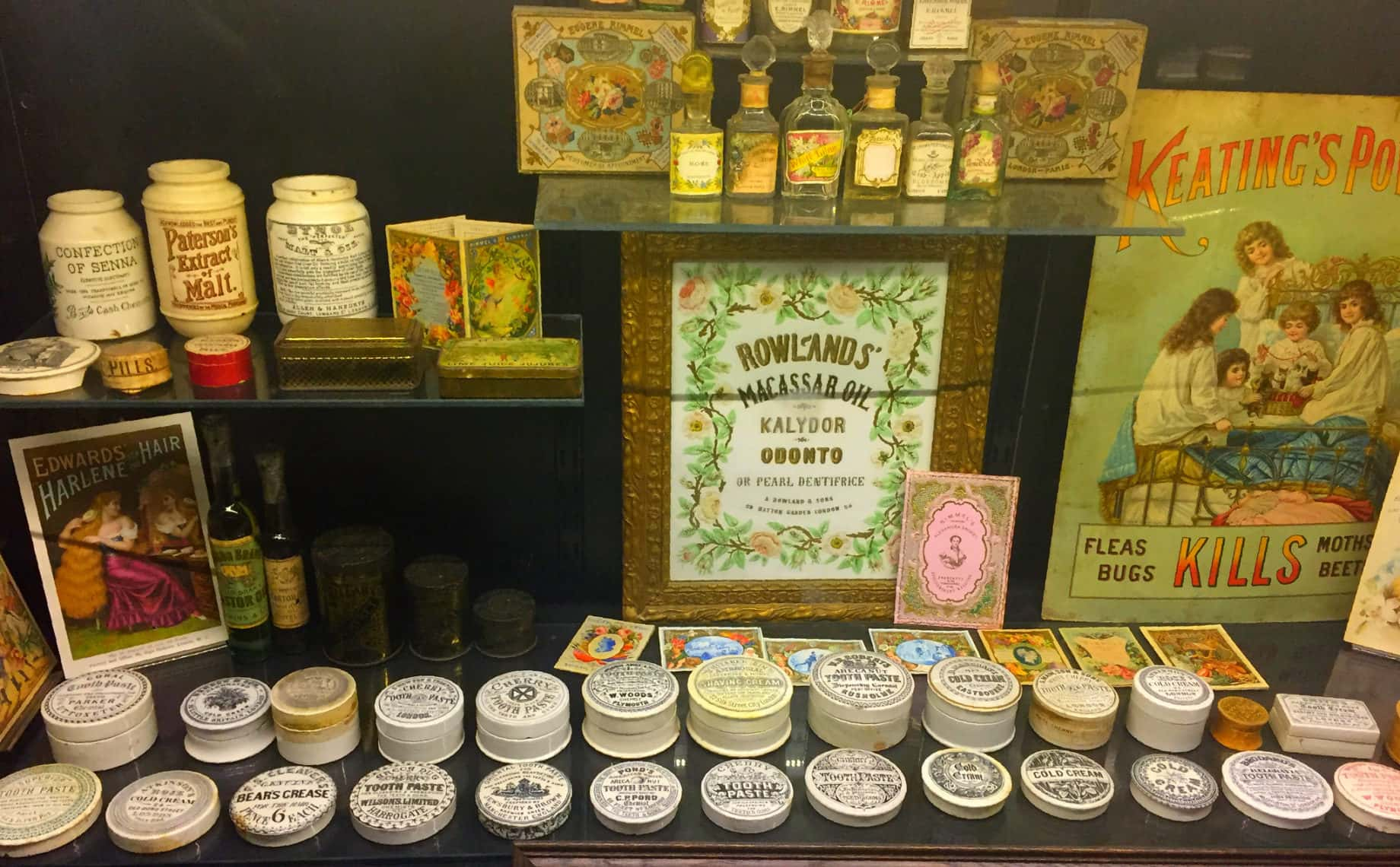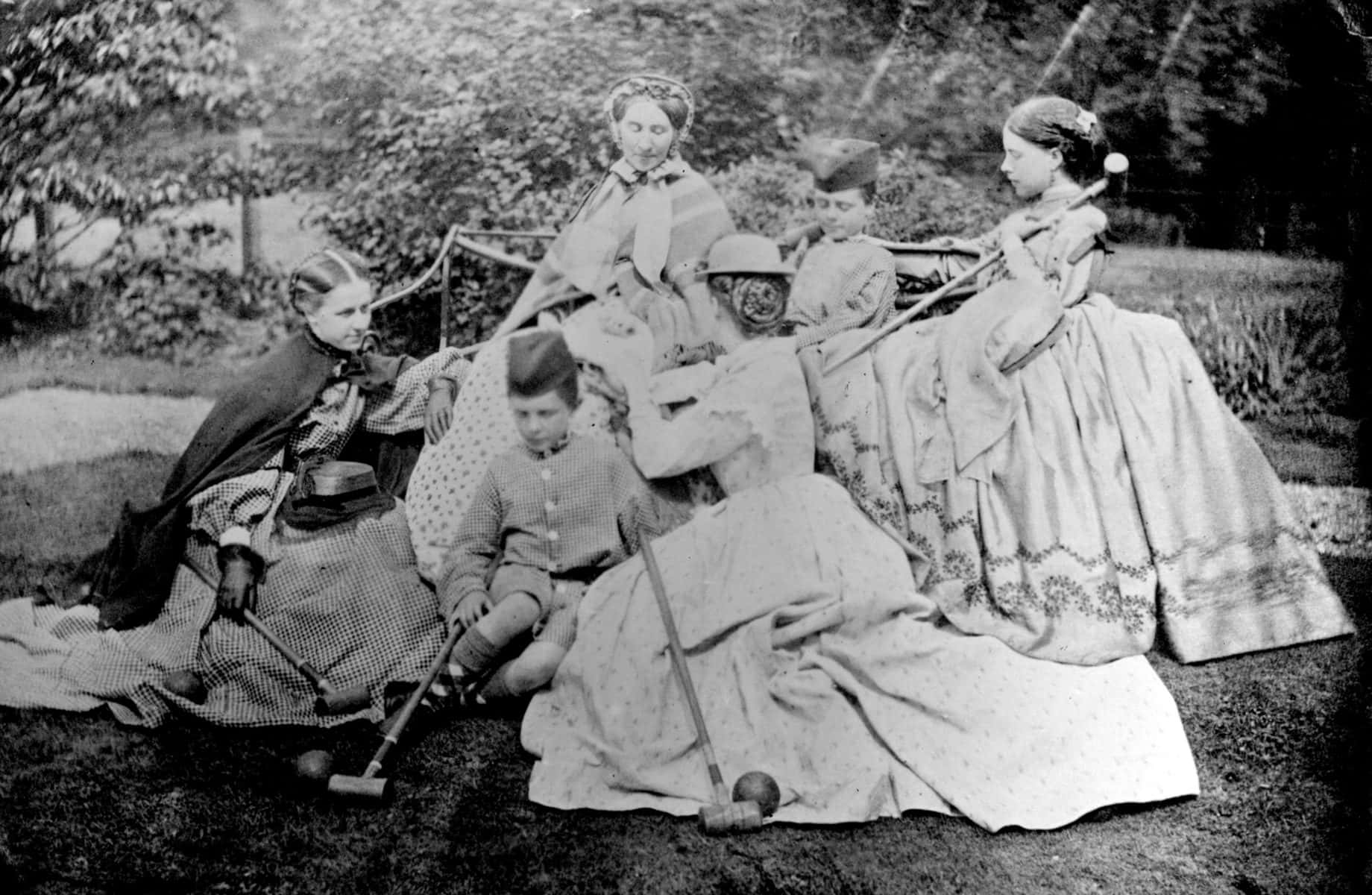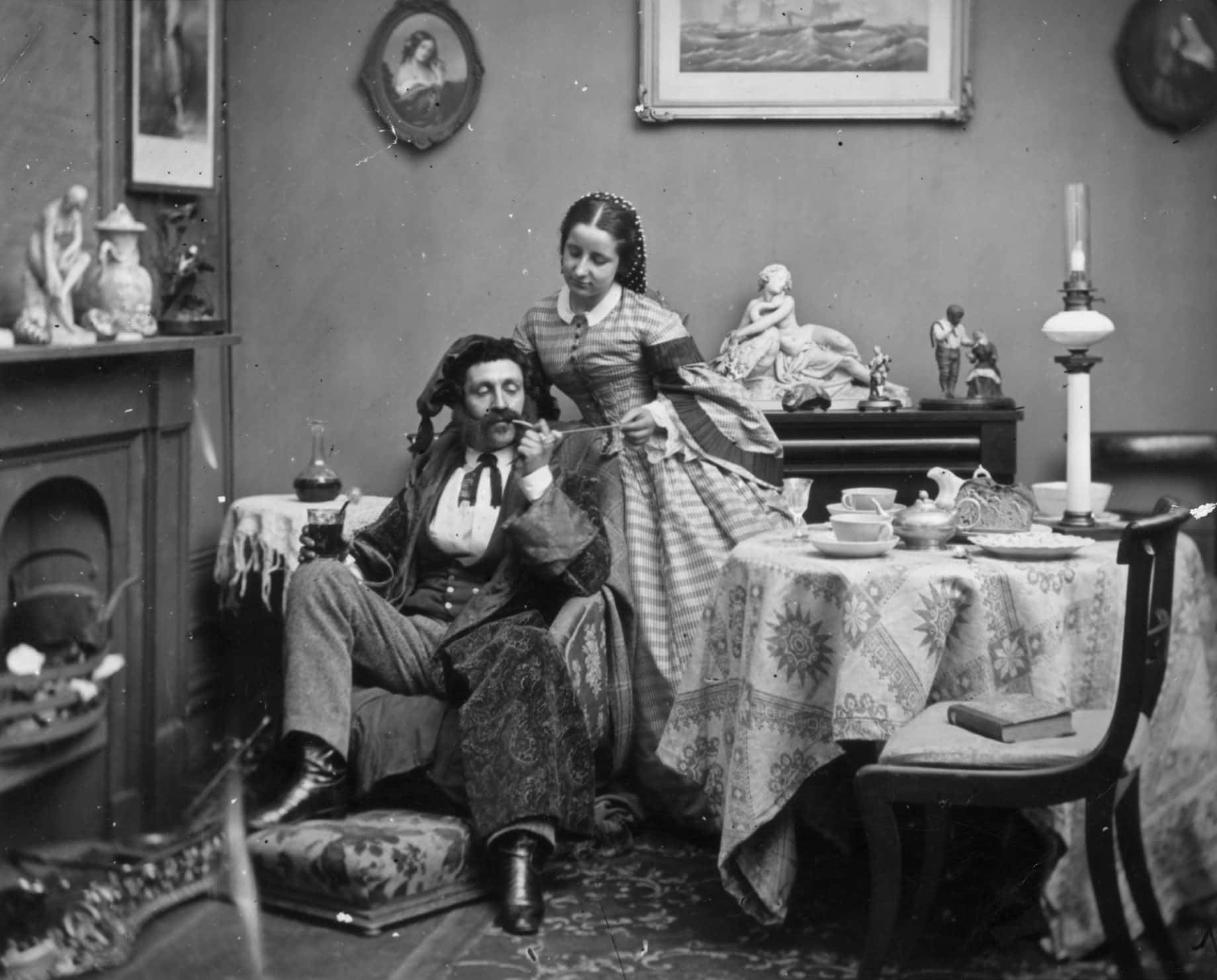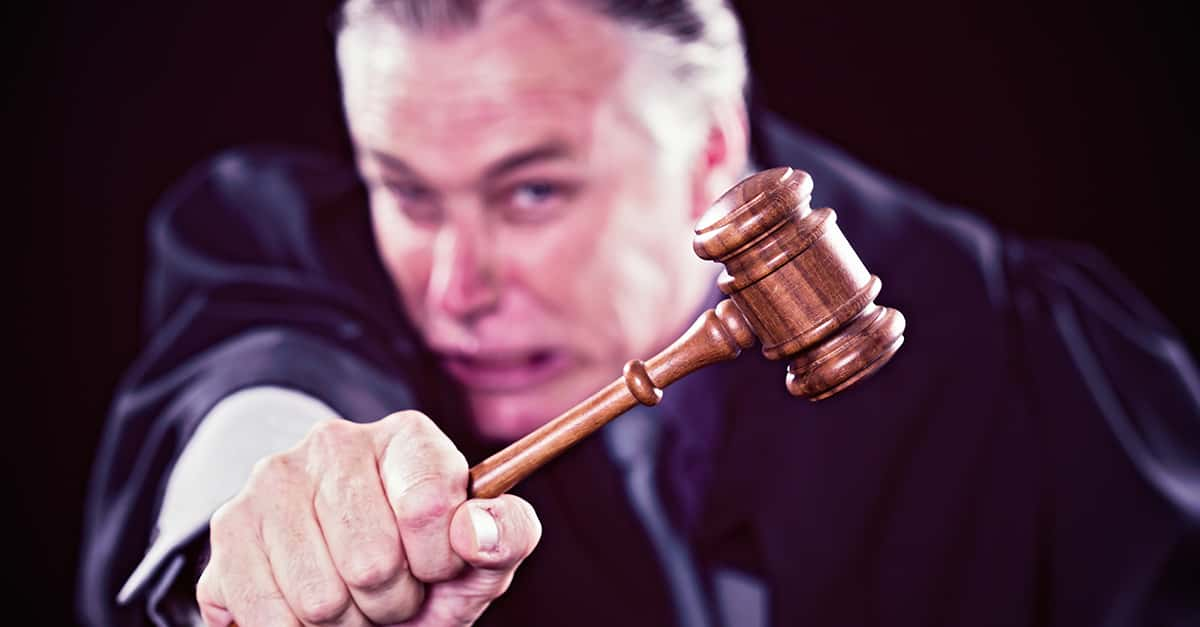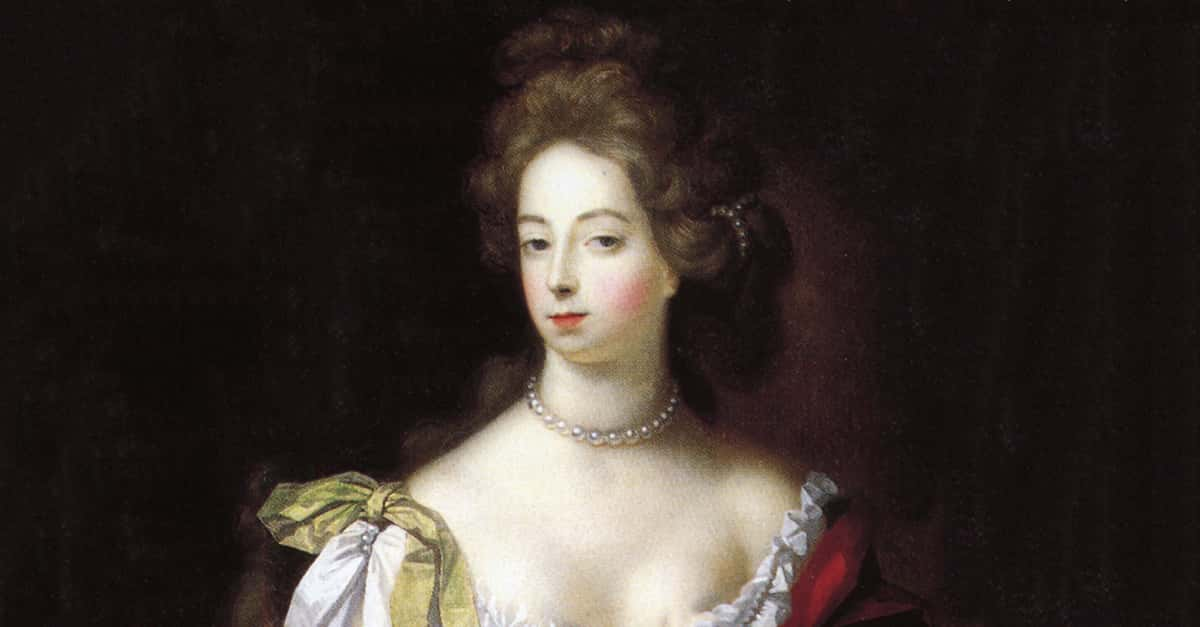Baffling Trends. Queen Victoria. Chimney Sweeps. Raging Diseases. The Industrial Revolution. The Victorian Era was a period of enormous transformation for 19th century Britain. Society was prosperous and innovative, spreading across the British Empire, though the Victorians also struggled with rigid social constructs at home in the United Kingdom.
During the reign of Victoria, from 1837-1901, Britain was like a novel by Charles Dickens: funny, strange, sad, dramatic, and terrifying in equal measure. Pour the tea and get ready to read these 45 proper facts about the Victorian age.
Victorian Era Facts
45. Snow White
The practice of putting up a Christmas tree is in part thanks to Albert, the husband of famous Queen Victoria. Born and raised in Germany, where the Christmas tree was common, Albert brought the iconic Christmas symbol to the English population by decorating Windsor castle in 1840. Other Christmas traditions that originated in the 19th century included exchanging gifts, giving Christmas cards, and pulling Christmas crackers.
44. Working In The Coal Mines
If you've read Charles Dickens' Oliver Twist, picture the scene: fuming factory chimneys, miserable children, and the whirr of the Industrial Revolution. Yup, child labor was common in the Victorian age, largely because poor families didn’t earn enough for food without it. One job that had a high demand for children was work in the coal mines. A child's small size could maneuver in tight spaces, and they required far less pay than adult workers.
In the Victorian era, kids would work for 12 to 18 hours in air saturated with coal dust, and there was constant danger. Other jobs included chimney sweeping (where children could start working as young as 3) and working in factories or textile mills. In 1891, the National Society for the Prevention of Cruelty to Children was formed, offering some protection to child laborers.
43. Feeling Blue?
Hydrotherapy was the practice of using baths of hot or cold water to cure what ails you. Seeing the enthusiastic response to this “medical” trend led many doctors who catered to wealthy clients to open their own hydrotherapy clinics. The water cure, as it's known in British history, was used to treat anything and everything. Were you a business man suffering from baldness? An outspoken wife whose husband wanted to cure her of "hysteria" aka having an opinion? The water cure was for you.
42. Industrial Bosom
For a lady to have pierced ears was nothing unusual, but in late Victorian Britain, nipple piercing became a fashion among more stylish and daring women. Generally, gold rings were used for the piercing, and if both nipples were pierced, the rings might be joined with a chain. Perhaps the popularity of this practice came from the idea that the rings would make the breasts grow and correct their shape.
Of course, there is also the possibility that the wearers of this trend simply found it to be a curious Victorian era pleasure.
41. Didn't Learn This in British History
Street vendors of the Victorian age sold some, er, unusual foods. One popular delicacy was sheep’s feet, which were sold hot or cold. People in Victorian Britain called them "trotters" and purchased them at low prices from slaughterhouses. Vendors would buy them and prepare them at home by skinning and parboiling them, before selling them to workers in the street. Customers would then suck the meat and fat off the bones.
40. Modesty Boards
We’ve all seen parodies of “racy” Victorian photographs, where a woman shows off a single ankle. Well, showing even a tiny bit of skin was taboo, and necessity is the mother of invention. Thus, the ever-industrial Victorians created "modesty boards." These boards would be nailed or propped up close to the ground to ensure that women’s ankles were not visible when they were seated.
39. Read The Room
The Victorian age was home to some of the most rigid social codes in British history. When women visited friends and acquaintances, it was called “paying calls,” and could only be done in the afternoon. To pay a call at any other time was an incredible show of bad manners, as was failing to read social cues and overstaying your welcome. Like an intricate board game, if someone else came to pay a call while you were at someone’s house, you would gracefully exit, lest you be considered rude.
38. Seeking Life on Mars
Buttoned up as they were, the Victorians also believed that there was life on Mars. Giovanni Schiaparelli, an Italian astronomer, claimed that he saw artificial waterways on Mars through his telescope. That must’ve been some telescope! Apparently, for Schiaparelli, these canals were evidence that extraterrestrial beings on the red planet had some form of technology and were attempting either travel or commerce.
These ideas were generally quite popular and taken seriously by the public. People would even leave money in their wills dedicated to kooky scientific causes, like making contact with extraterrestrial life.
37. I’ll Have a Beer With That
Now here’s something we can get behind: Clean, potable water was hard to come by in Victorian society. It was generally polluted and considered more dangerous to drink than nature’s other perfect liquid—beer. Whether you were sick, pregnant, or just a child, beer was generally safer to drink than water. Hey, if I was seven years old and burnt out from some 12-hour days at the coal mines, I’d want a beer too.

History's most fascinating stories and darkest secrets, delivered to your inbox daily.
36. Home Schooled
It’s hard to imagine, but there were no public schools during the Victorian era. As long as lower-income families, like the kind in novels by Charles Dickens, sent their children to work, they just weren’t needed. Some free church-run schools existed, but many poor families needed their kids to earn money, not learn to read.
In rich Victorian era families, boys went to expensive schools where they read Latin and Greek, with some even attending Oxford. By the end of the 19th century, the government finally realized that working people needed education. As Victorian times ended, the prime minister decreed that school was mandatory for all children until 13.
35. Multiple Inkings
Though modern-day royals are unlikely to have any tattoos, in the Victorian era, it was common for the nobility to adorn their bodies. It all started when Queen Victoria’s son, the Prince of Wales, visited Jerusalem. He saw someone getting a tattoo and decided to get one of his own. With this decision, he started a huge trend. Some estimates say that almost 100,000 people across the United Kingdom got tattoos.
34. Meat Masks
Was it Lady Gaga’s inspiration at the 2010 MTV VMAs? Or a stinky proto-version of today’s sheet mask fad? Either way, it’s proof that beauty writers have been leading us down some interesting paths since at least the Industrial Revolution. If you read one 19th century beauty column, you might try binding slices of raw beef to your face at night, in order to prevent wrinkles and promote a youthful, radiant complexion.
33.The Boy in the Dress
Pink clothes for girls and blue clothes for boys is a relatively recent idea. In the Victorian era, all genders of children would wear frilly white dresses until they reached school age. The richer a family was, the more bells and whistles (a.k.a. ribbons, bows, lace, and buttons) the dresses would have. Both genders also wore bonnets.
32. Hell on Earth
Despite its innocent-sounding name, Angel Meadow was a Manchester slum that was so rough, overcrowded, and terrible to live in that it was nicknamed “hell on earth.” Within one square mile lived a population of approximately 30,000 Irish immigrants. Children were generally left to fend for themselves. Everyone would scavenge for food, and purportedly, catch and eat stray cats. Um, where is the prime minister and why isn't he helping these people?
31. Glutton Club
Nose to tail eating isn’t just a recent food trend. Charles Darwin himself had a strong interest in eating animals. As a member of a Cambridge Society called the “Glutton Club,” Darwin chowed down on hawks, squirrels, maggots, and owls. And that’s just when he was home! When he went on an expedition, Darwin ate iguanas, giant tortoises, armadillos and a puma. And here I thought I was adventurous for trying oysters.
30. Charcoal and Honey
Since toothpaste didn’t exist in the Victorian era, people would clean their teeth with homemade "dentifrice"—a French word for toothpaste. One of the recipes was a mixture of charcoal and honey, which, now that everyone's using activated charcoal to keep their teeth white, actually kind of makes sense?
29. Widow of Windsor
Queen Victoria has a much better excuse than I do for only wearing black for the last 15 years or so...
After the iconic royal lost her beloved husband Albert in 1861, Victoria wore black for the next 40 years until her death. During the long days of her mourning period, the Queen showed her devotion to Albert by living in seclusion. She didn’t attend public events and earned herself the nickname the “Widow of Windsor.” Ironically, Victoria disliked black at funerals and ensured that the streets of London were decorated in purple and white when she died.
28. Au Naturel
Makeup was considered gauche for a society woman to wear, as it was used mostly by sex workers. One judge even proclaimed that lipstick was similar to witchcraft, in that it had the ability to seduce men. If you were a society woman, you would probably pinch your cheeks to give yourself a glow, and you might use cold cream to appear youthful and dewy. If you felt risqué, you might apply the tiniest amount of rouge to your pale, white cheeks. I’d rather live in a society with a Sephora any day.
27. Shocking the Problem
Ah, another funny footnote to the Industrial Revolution. Across the United Kingdom, electrotherapy, or shock therapy, was used to treat multiple medical problems, including gout, muscle pain, rheumatism (arthritis), and liver problems. What was the complicated medical scientific explanation behind this? This so-called "technology" was about as intricate as trying to scare the hiccups out of someone by yelling “Boo!” Essentially, the hope was that applying electricity would shock the problem out of the patient.
26. Fitness Fanatics
The gym rat is, surprisingly, not a 20th-century invention. As you can tell from all the superstitions and practices around beauty and health, the Victorians really cared about achieving a physical ideal. And, much like the current day, those with the most money often had the most time to work on themselves. Bodybuilding was a hobby of the elite, as were fad diets and exercise trends. Nearly 200 gyms, or fitness centers, proliferated across Europe to meet the demand for physical perfection.
25. Newfangled Machines
The Victorian era was a great time of invention and, of course, the famous Industrial Revolution. Guglielmo Marconi came up with the radio in 1895. In 1876, Alexander Graham Bell invented the telephone. Other notable inventions made in Victorian Britain included the camera, the television, the vacuum, the train, the stamp, and most importantly: the toilet.
Bonus fact about trains? The railway enabled some dangerous behavior. Philandering husbands took advantage of the new tech. They'd take, er, breaks from their wives and start new, secret families a few stops further along the railway line.
24. Bottling Tears
It wasn’t just Queen Victoria mourning her husband—mourning was a serious business in Britain during the Industrial Revolution. Mourning women wore beautiful, elaborate jewelry that incorporated onyx or jet (both black stones) and even braided hair from the deceased. Tears cried for the deceased would be collected in bottles.
Plus, if you were a bachelor who didn’t leave a widow behind, you could always hire a local blonde woman to wail at your grave and make it seem like you were adored.
23. Mummies Were In
We have the Victorians to thank for those huge museum wings filled with Egyptian artifacts. In the early 1900s, Egyptology was the most popular branch of the new field of archaeology. The Victorians were absolutely obsessed with artifacts, dug-up tombs, and mummies. If you organized a lecture on ancient Egypt, it would be a guaranteed hit in Victorian society.
22. Where Does This Fit Into Industrial Victoriana?
On top of believing in aliens, Victorians also subscribed to the ideas of hypnotism, divination, and spiritualism. It really sounds like London women just needed hobbies, honestly. Events where attendees could be hypnotized, speak to the dead, or have their palms read were extremely popular, and hucksters would make huge money off of bored Victorians.
Makes you see the ghosts in Charles Dickens' A Christmas Carol in a new light, right?
21. Curious Collections
In the Victorian era, collecting was a major part of people’s lives. Collections often included "curiosities" such as zoological, botanical or geological finds from across not just the British Empire but the entire world. Shrunken heads, seashells, antique weapons, and clockworks were commonly collected items. These collections would be displayed in a large “cabinet of curiosities.” But of course, just like the spiritualists, many of the items were fake. Hobby game: weird.
20. Pelvic Finger Massage
Many women in Victorian England suffered from “hysteria,” which was really just a catch-all name for anything that bothered them. Feeling blue? Hysteria. Irritable? Hysteria. Anxious? Hysteria. How could you cure this horrible ailment? Well, with a “pelvic finger massage” which would cause “hysterical paroxysm.” That is to say, having a doctor use his hands to cause an orgasm. Another extremely strange by-product of a sexually repressed society.
19. Electric Stimulator
Maybe it was their own fault for diagnosing basically every problem a woman had as hysteria, but either way, doctors could only perform so many “pelvic finger massages” a day before presumably beginning to battle Carpal Tunnel Syndrome themselves. As a result, the vibrator was the fifth home electronic invention ever created, preceding the electric vacuum cleaner, the electric iron, and the electric frying pan by nearly a decade.
18. Dangerous Games
Parlor games were extremely popular with Victorians, especially at Christmastime. One game was called “Snapdragon,” during which a bunch of raisins were put into a bowl with rum and set on fire. The object of the game was to get the raisins out of the bowl and eat them while they were still on fire. Whatever floats your boat! Some games from that era which were simpler and safer are still played today, like charades and an early version of musical chairs.
17. London Fog
It’s not just your favorite Starbucks drink! Due to a lack of regulations on industrial pollution, smoke from the factories, coal pollution, and moisture from the Thames river combined to create a thick, toxic smog which spread over the city. Anyone and anything would spend any time out and about in London would inevitably be covered with the sooty by-product of the city's fog. Buildings were often stained, and black became the color of choice for clothing.
16. Stuffed Kittens Having a Tea-Party
Yet another weird hobby in the Victorian era. People would regularly fill a day with taxidermy, the practice of stuffing dead animals. And what would you do with all your small taxidermied friends? Why, create an anthropomorphic tableau of course. The ‘stuffed’ animals were dressed in tiny human clothing, and posed in dioramas recreating human activities.
One of the most well-known artists in Victorian Britain was the taxidermist Walter Potter, who created scenes of rabbit schoolboys, cigar-smoking squirrels, and kittens having a tea-party. Without him, we may have never got to see The Bachelor’s Arie fall in love with Kendall over a tableau featuring two taxidermied rats recreating their romantic Paris kiss.
15. Poor, Wealthy, Rich
Across the United Kingdom, Victorian era society had three main classes: the population was divided into the upper class, the middle class, and the working class. After the tumultuous Industrial Revolution, the gap between the upper and middle class narrowed. As a sign of the changing times, many middle-class households were now considered wealthy.
14. Not a Good Time to Get Sick
Tuberculosis was the leading cause of death from sickness in the Victorian era. Even so, instead of being treated in hospital with medication, the only treatment to be had was in workhouses. If you were lucky enough to have an illness that could be treated in hospital by surgery, you would have to go into the operation completely awake and fully present, as there was no such thing as anesthesia or painkillers.
13. Dining in the Dark
Victorians believed that digestion could be aided by sitting in the dark, and so, dining rooms were built in the basement, close to the kitchen. At least they got to eat the food that they could barely see while it was still hot! In later years, the room was moved to the first floor, but based on knowledge gleaned only from Downton Abbey, servants still took their meals in the basement.
12. Strange Side-Shows
Another common form of entertainment in Victorian England was the freak show. Fuelled by the Victorian interest in physical oddities and death, attractive, exotic touring freak shows often visited London and rural towns. Showmen worked hard to make a name for themselves, with the American icon P.T. Barnum known as the most successful showman of his time. Paraphernalia from the shows also became popular, and "freak trading cards" were incredibly successful.
11. Bottomless Bottoms
Women’s bloomers were the base layer of every outfit, but they were designed to only cover the leg---not the part between the legs. Dresses served the function of keeping everything covered, since they were so heavy and elaborate. This bloomers design allowed ladies to use the toilet more easily.
10. Fasting Fad
Another Victorian fad? Fasting. “Fasting girls” could supposedly live every day without touching food or water, and made their “air diets” a fashionable practice. This drew a lot of attention and popularity to them, but obviously, they were gorging in secret. One popular reported case was that of Mollie Fancher, who claimed to survive for 14 years without eating.
9. Seen and Not Heard
The expression “children should be seen and not heard” originated in the Victorian period, referring to the way that the upper-class kids were expected to behave. Affluent toddlers were rarely in contact with their parents, and were mostly raised by a nanny. They were expected to be proper and polite, and they were not allowed to be loud. Repression is so good for a kid's development.
8. Going to the Crapper
You can’t make this stuff up. By 1870, thanks to Thomas Crapper, most wealthy homes had an indoor water closet, but otherwise, the Industrial Revolution didn't quite make it to old-school bathrooms, which were far from the toilets we use these days. Taking a bath involved a maid dragging buckets of hot water up the stairs to the tub, but by the time it got there, it was usually cold. Because many Victorians subscribed to the belief that being cold caused illness and possibly death, they usually just took sponge baths and covered their BO with perfume.
7. Breaking News, Read All About It
As you can tell by their disdain for cold water, doctors in the Victorian era frequently made huge guesses and leaps in logic when it came to preventative care. In 1875, one suggestion for preventing pneumonia was to cover yourself in sheets of newspaper. This would give the user a warm and comfortable night’s sleep and keep them from getting sick.
6. Don’t Drink the Water
By 1860, the Thames River was full of the raw fecal matter and sewage that was dumped into the water on a daily basis. Since the river was also the main source of drinking water for the city, people died by the thousands from dysentery, cholera, and typhoid. Once again, for people in the Victorian era, this was a great excuse to drink beer.
5. Swooning Susan
Corsets made from whalebone, and sometimes even iron or steel, helped women achieve the impossibly tiny waists that were fashionable at the time. But an ugly side effect of these binding garments was that circulation would be cut off, and women would have trouble breathing. The ultimate sign that something was maybe wrong with this fashion trend? Hordes of women fainting all over England.
The Victorians thought that women were prone to fainting from excitement, but they were wrong. Really, Victorian era ladies would momentarily pass out because their midsections were bound so tightly.
4. Consuming Poison
In the 19th century, arsenic wasn’t regarded as a poison in the same way it is today. Amazingly, women would use it as an age-fighting cosmetic, and men would take arsenic pills to get their engines revving. That’s right, it was basically a Victorian era Viagra. I guess doctors were too busy performing the water cure to notice the problem. It took many cases of illness and quite a few fatalities before they figured out that arsenic was toxic.
3. Death Photographs
It was common in the Victorian age to have photographs of loved ones taken after they died. Families in Victorian Britain would pose with the dead, with tikes that seemed to be sleeping and young ladies who seemed to recline. This practice was especially popular with children who died. Tragically, these strange, 19th century photographs were seen as a family's last chance to have a permanent likeness of their lost child.
As healthcare improved and life-expectancy grew, the period of death photography gradually diminished in the United Kingdom.
2. Keeping Curry Handy
Queen Victoria hated spicy food, but as the Empress of India and the leader of the British Empire, she demanded that curry be kept available at all times just in case a "visiting oriental" (yikes) turned up. But what Victoria thought of as curry probably wouldn't satisfy her visitors. It was basically a mix of already cooked ingredients with curry powder dumped on top.
Turns out I might be living in the Victorian Age...because I actually think I had something similar at a mall food court a few days ago.
1. Victorian Porn
In the battle between modern porn and Victorian porn, you'd think the modern day would win out, right? But guess again. Despite their buttoned-up exterior, gentleman of the Victorian Age loved to read hardcore erotic literature and look at lewd photographs. They could purchase these items secretly from under the counter of certain vendors, and the variety of material rivalled the number of genres you could find online these days.
Victorian Era Sources: 1, 2, 3, 4, 5, 6, 7, 8, 9, 10, 11, 12, 13, 14, 15, 16, 17, 18

